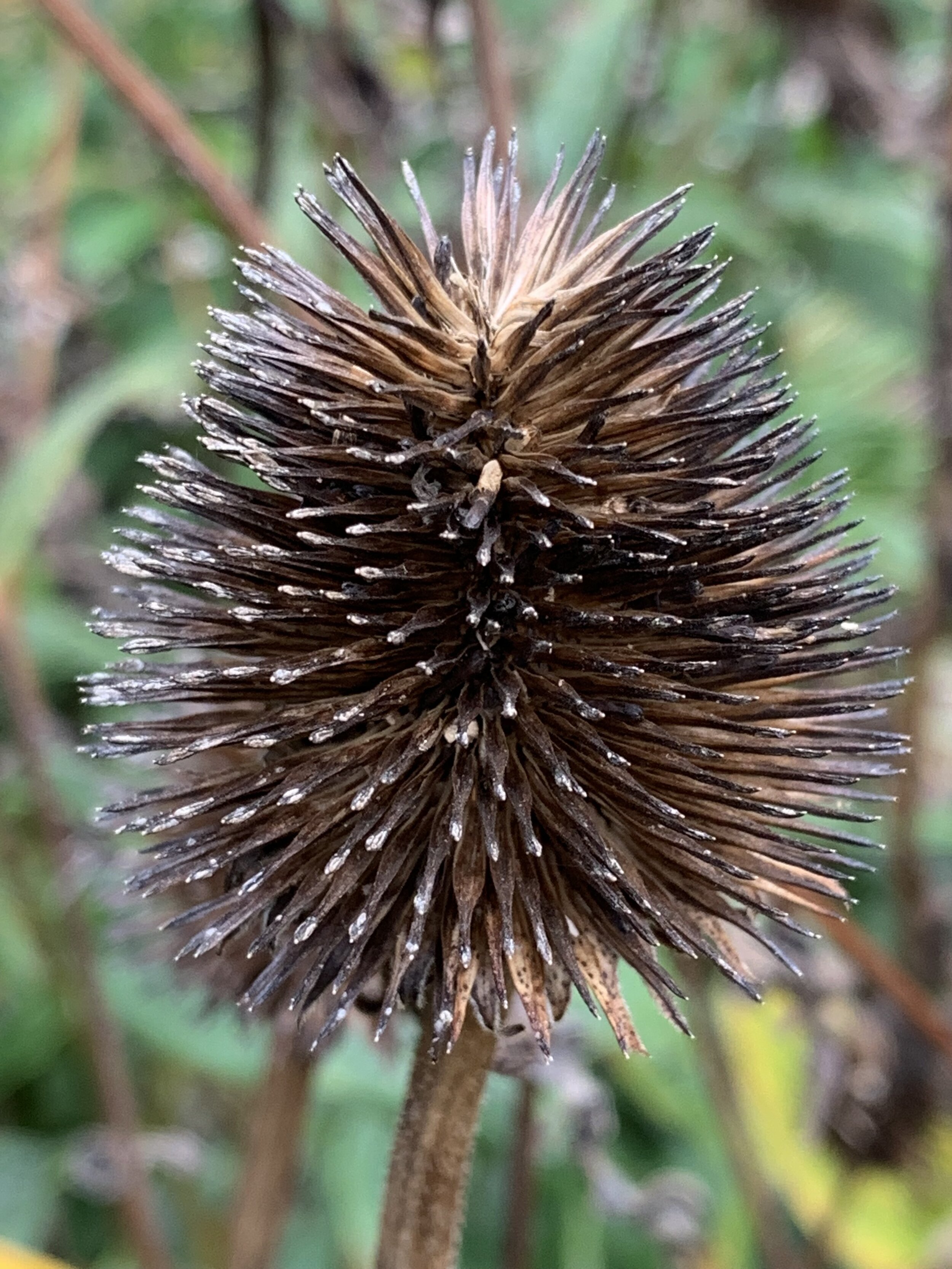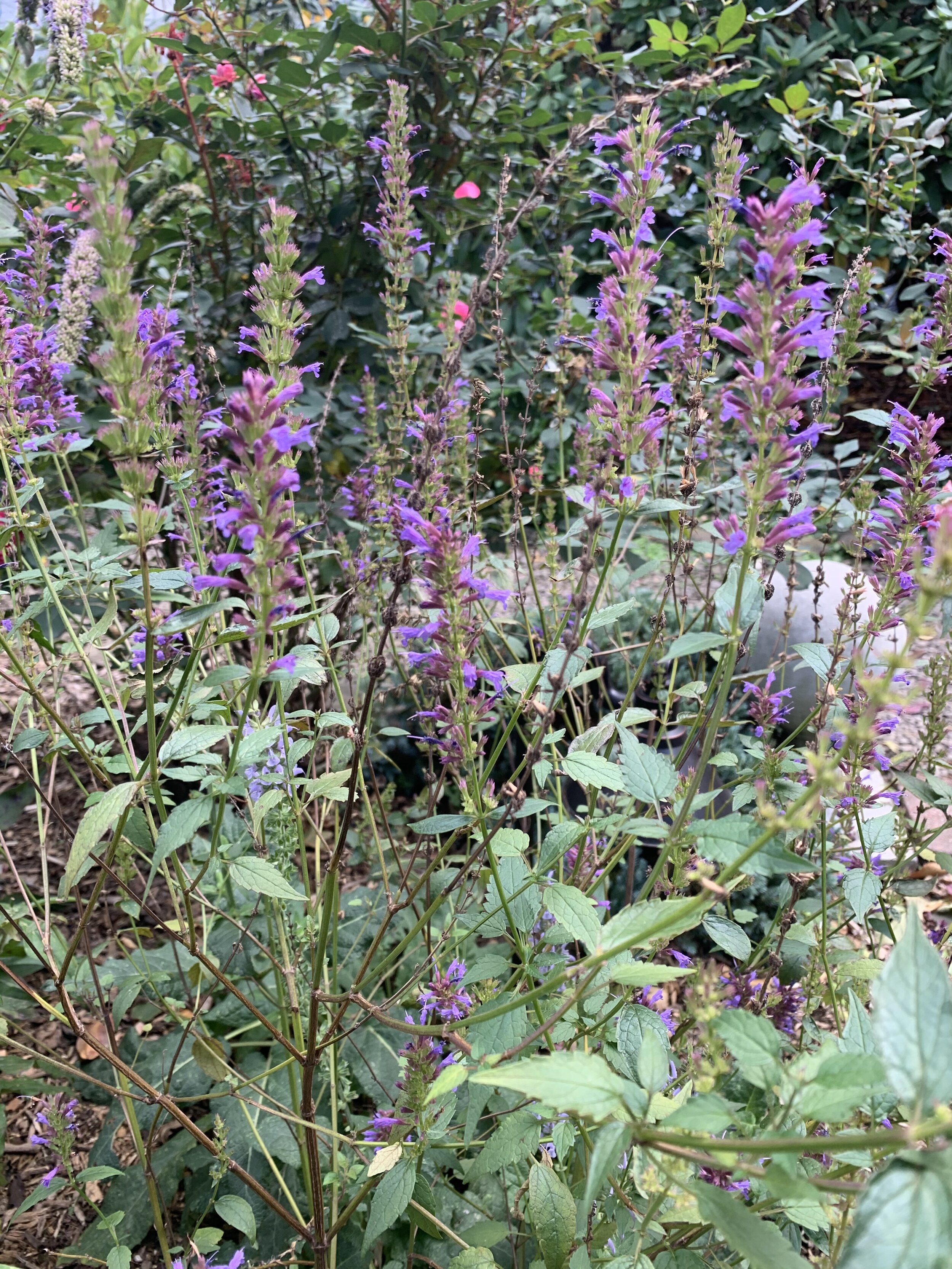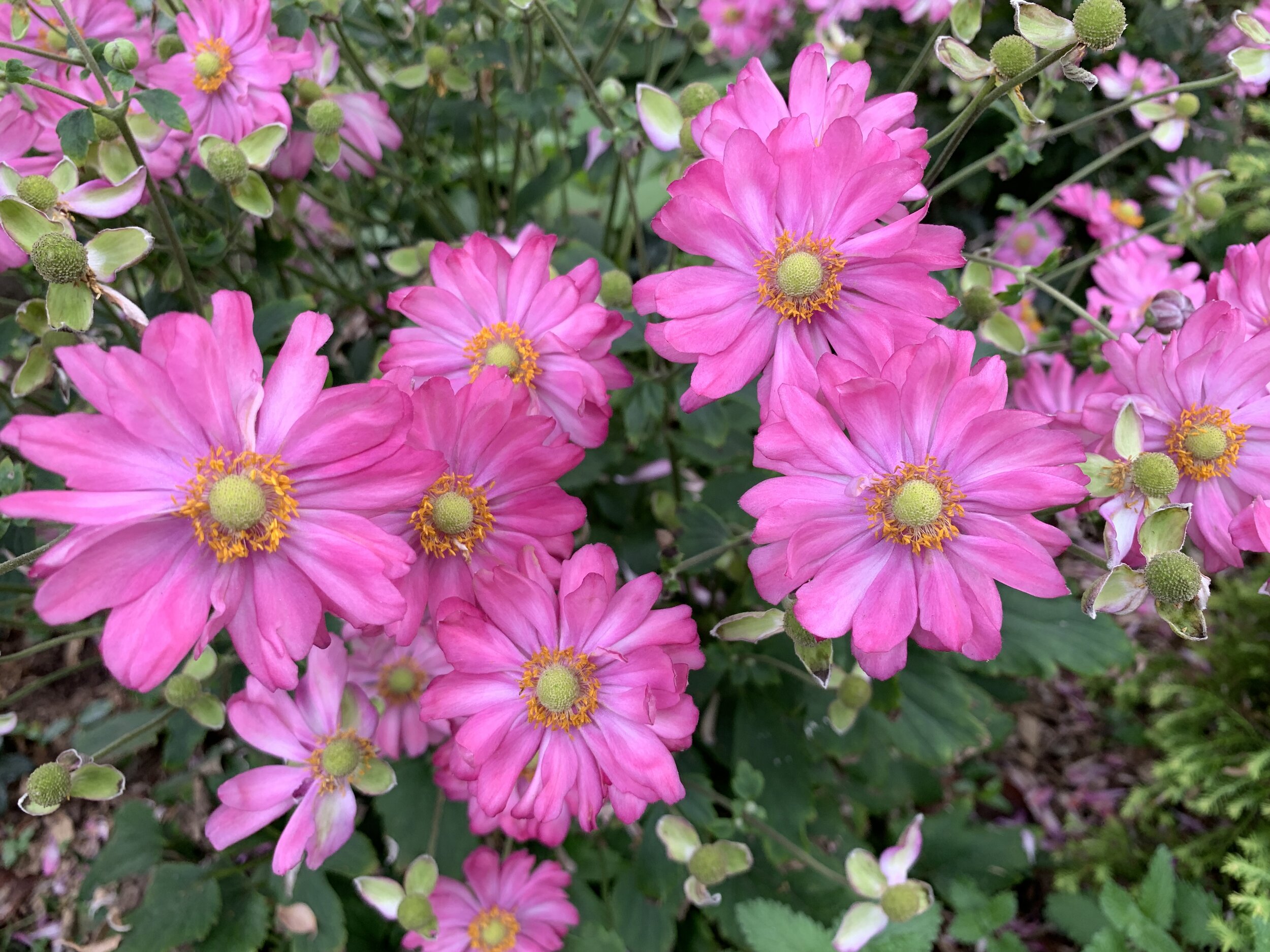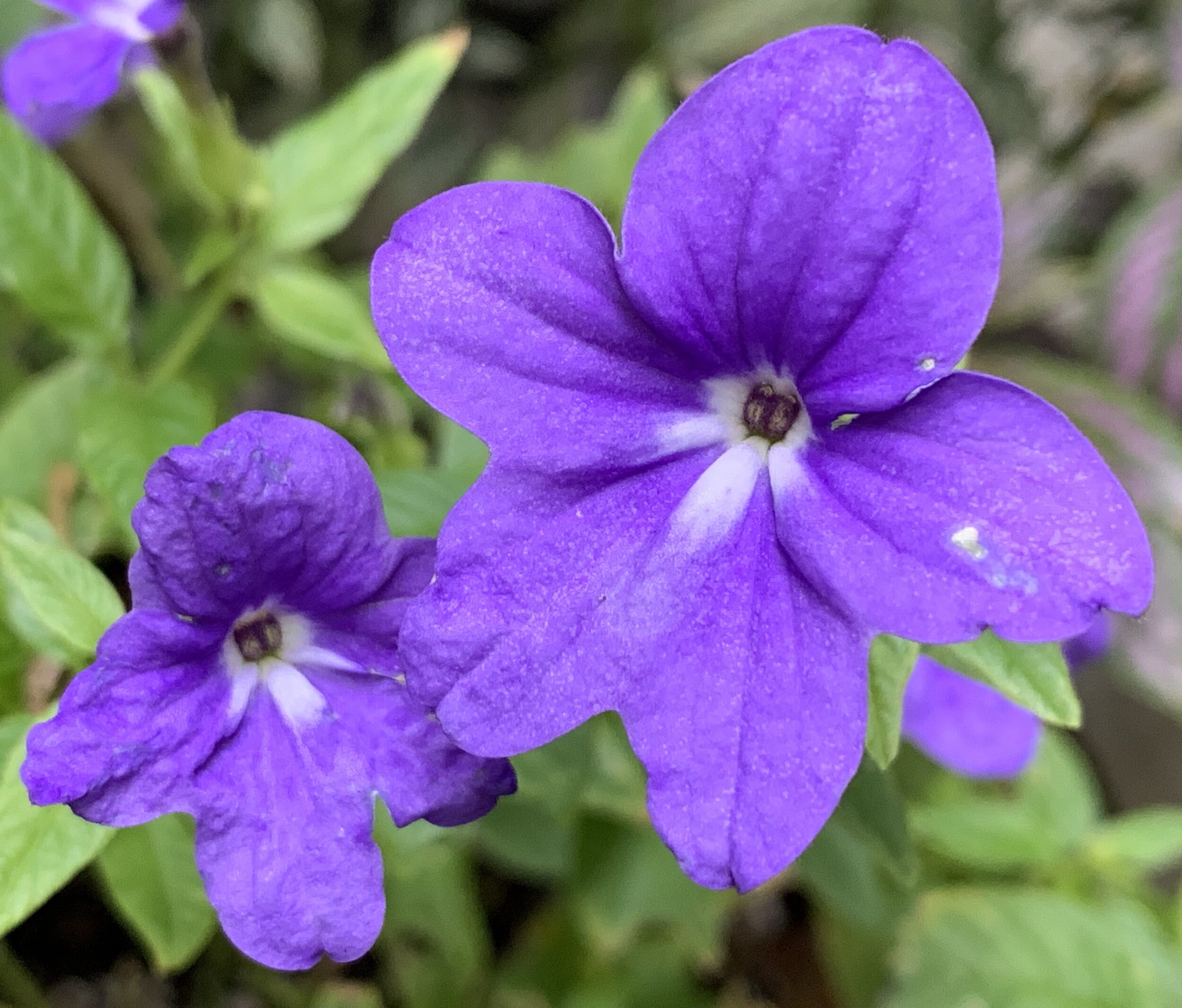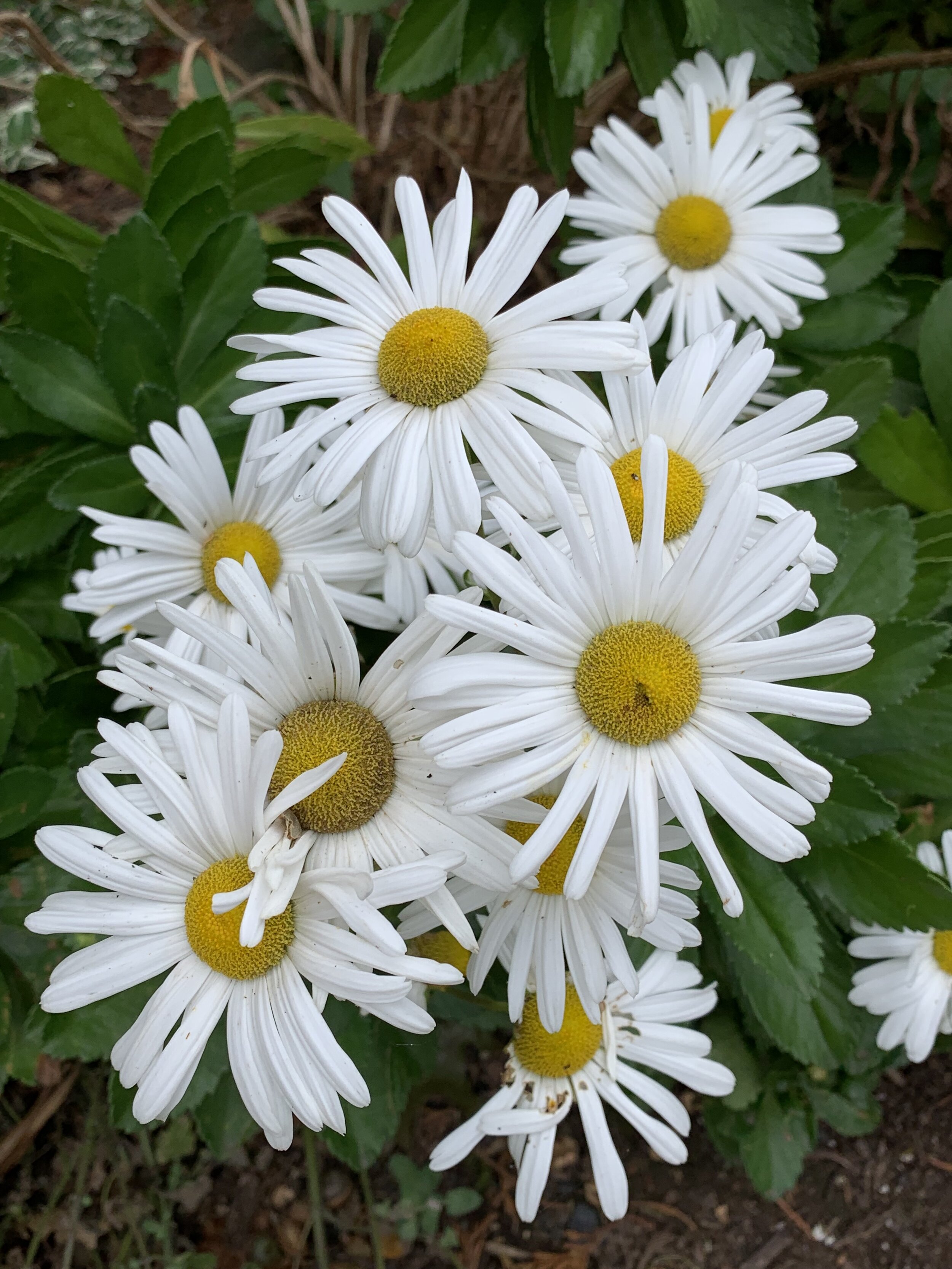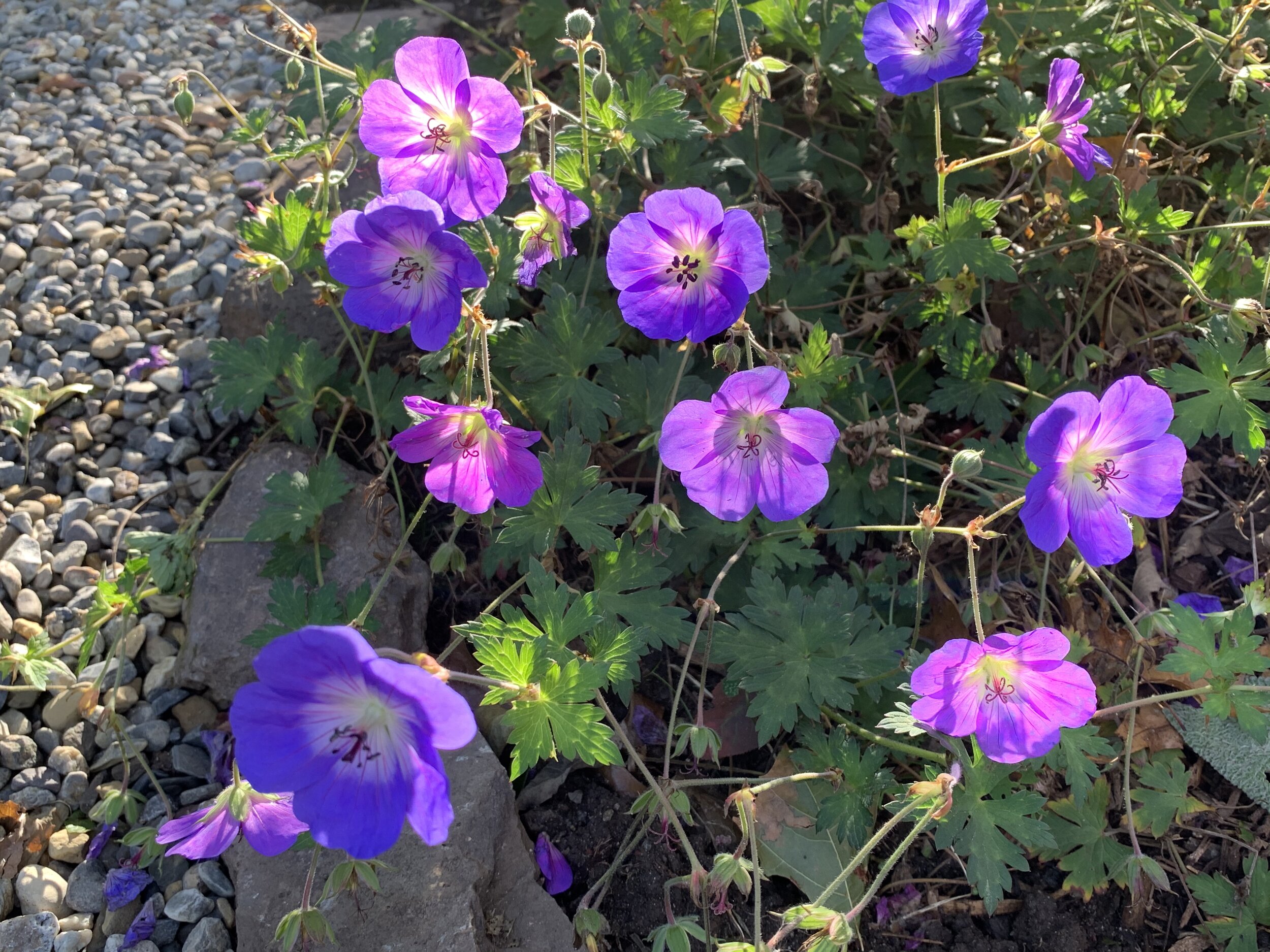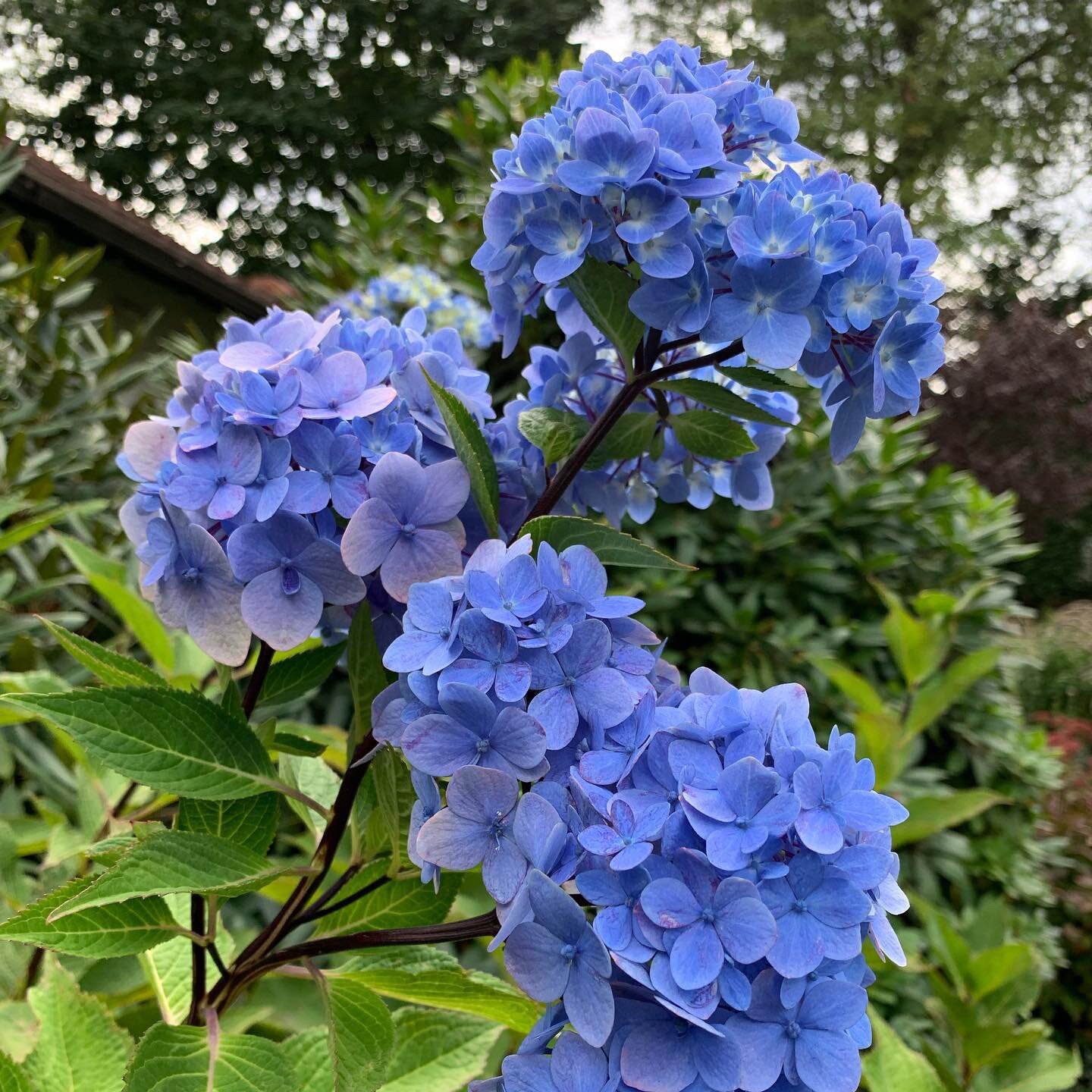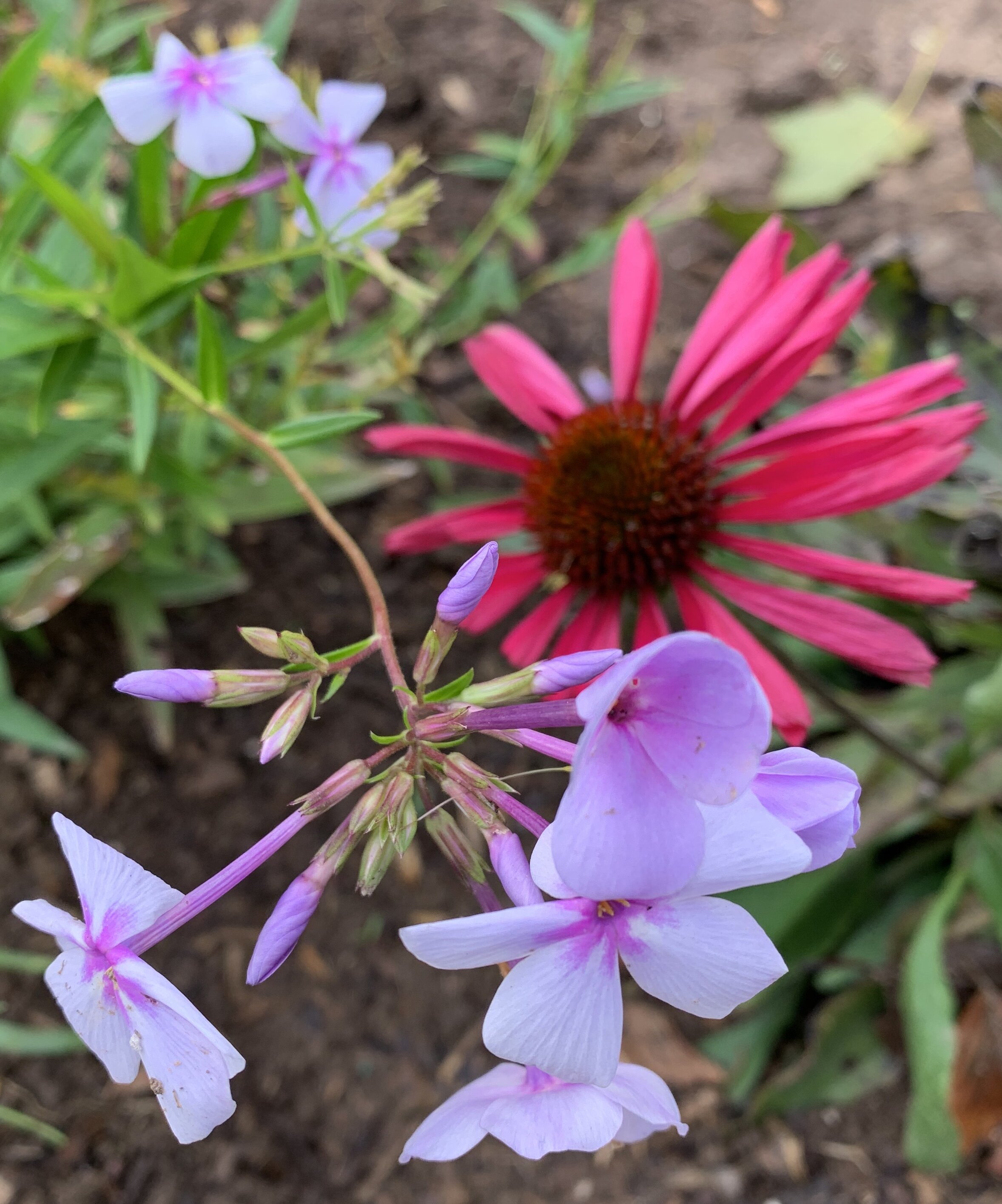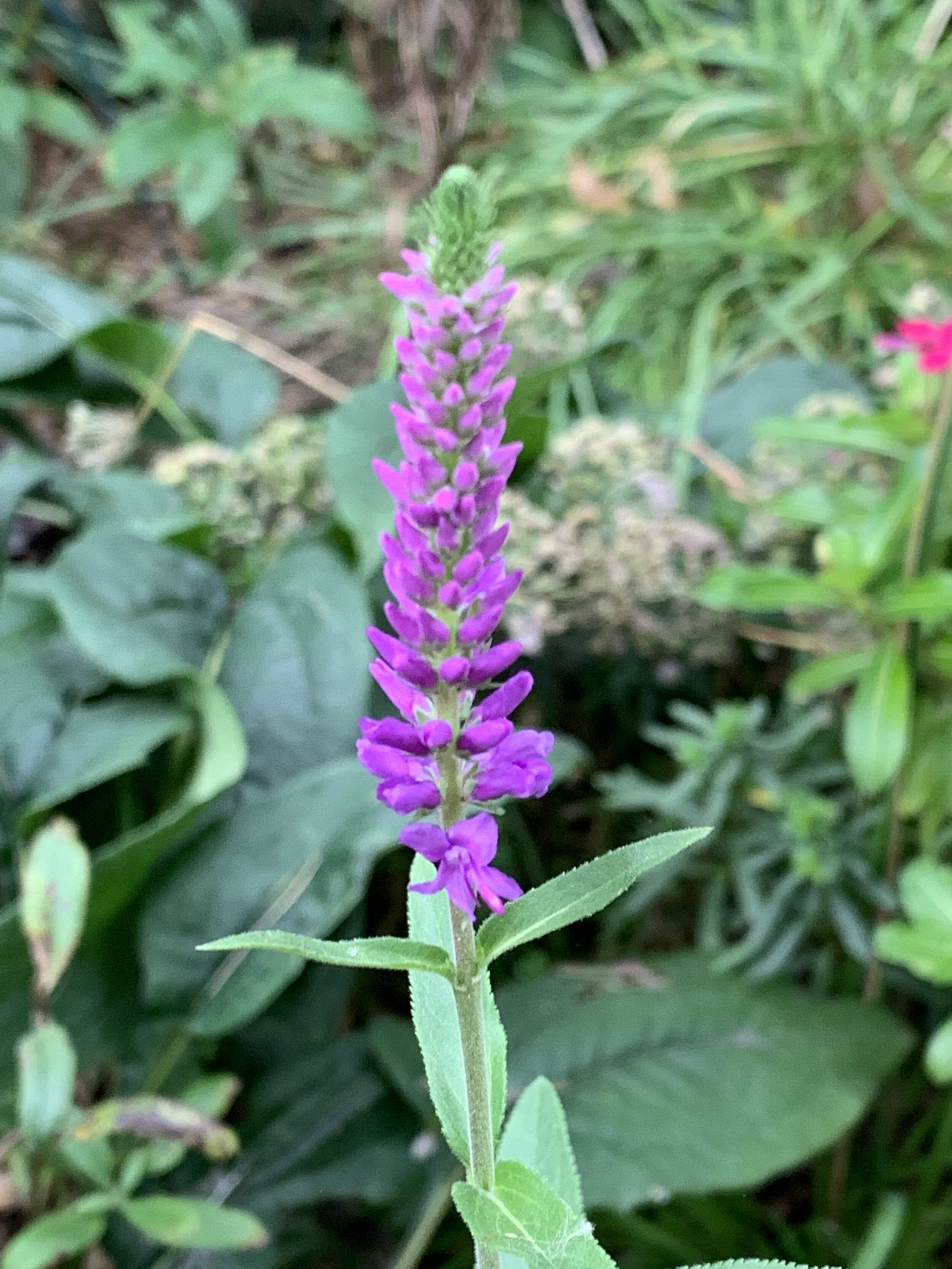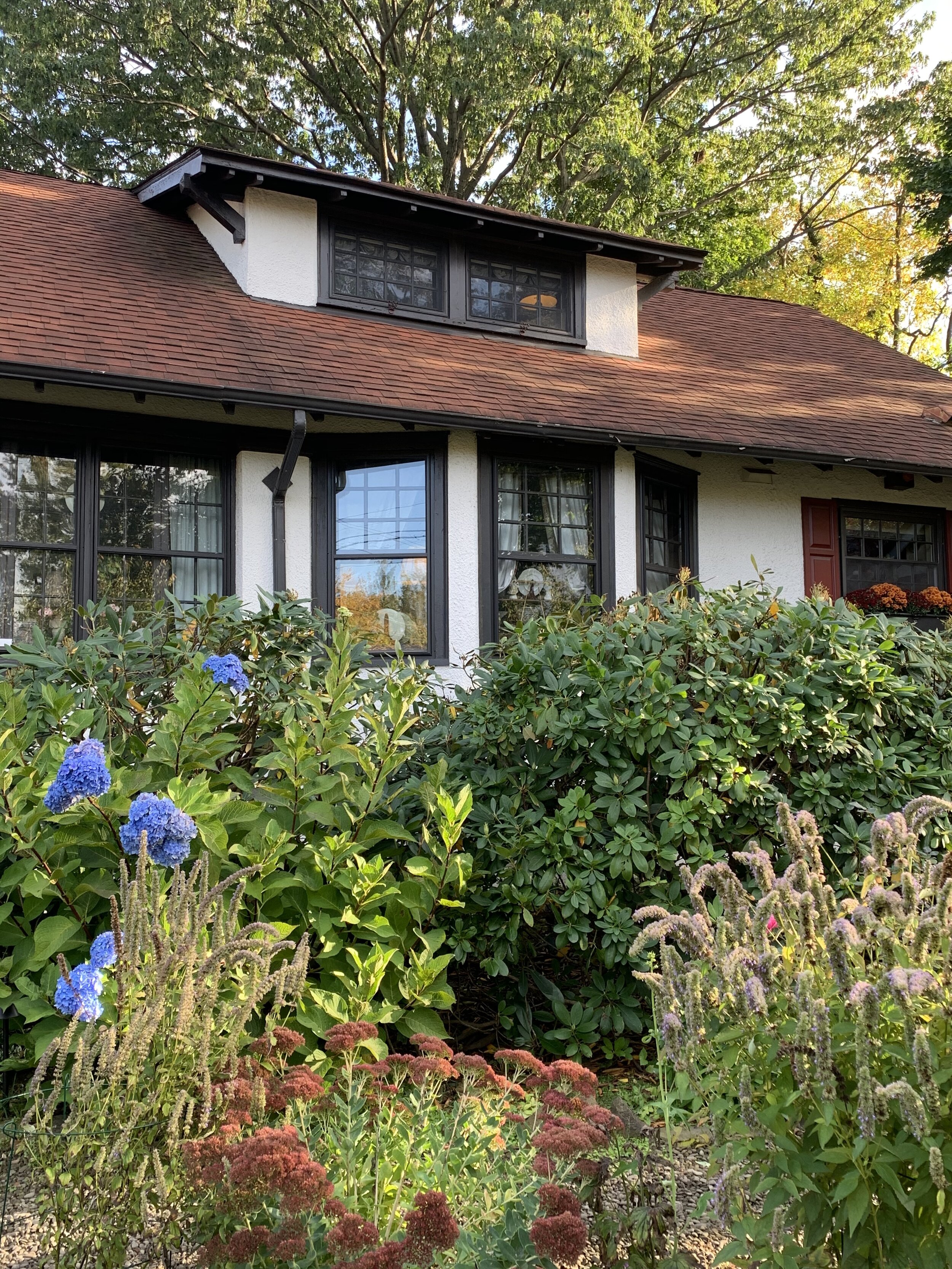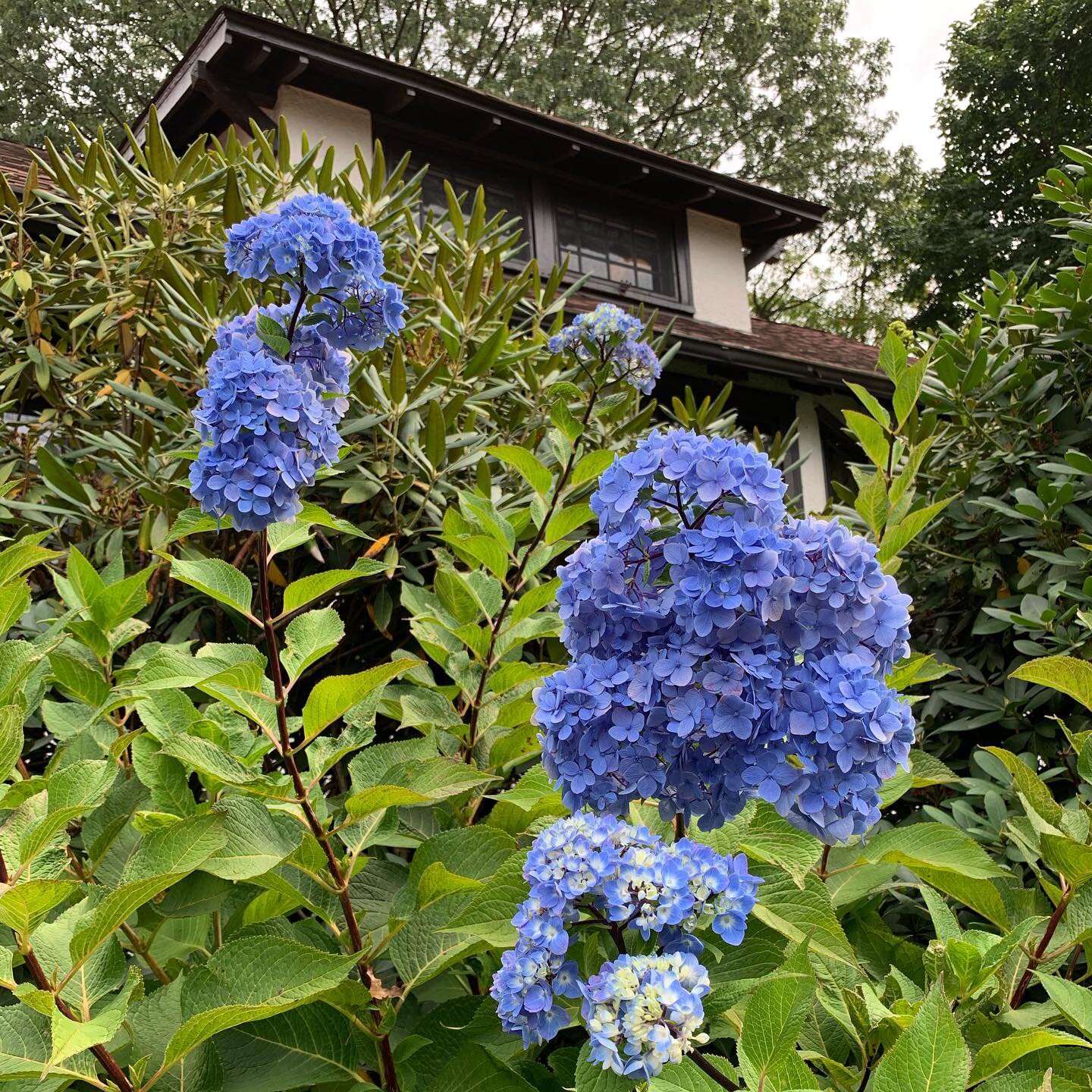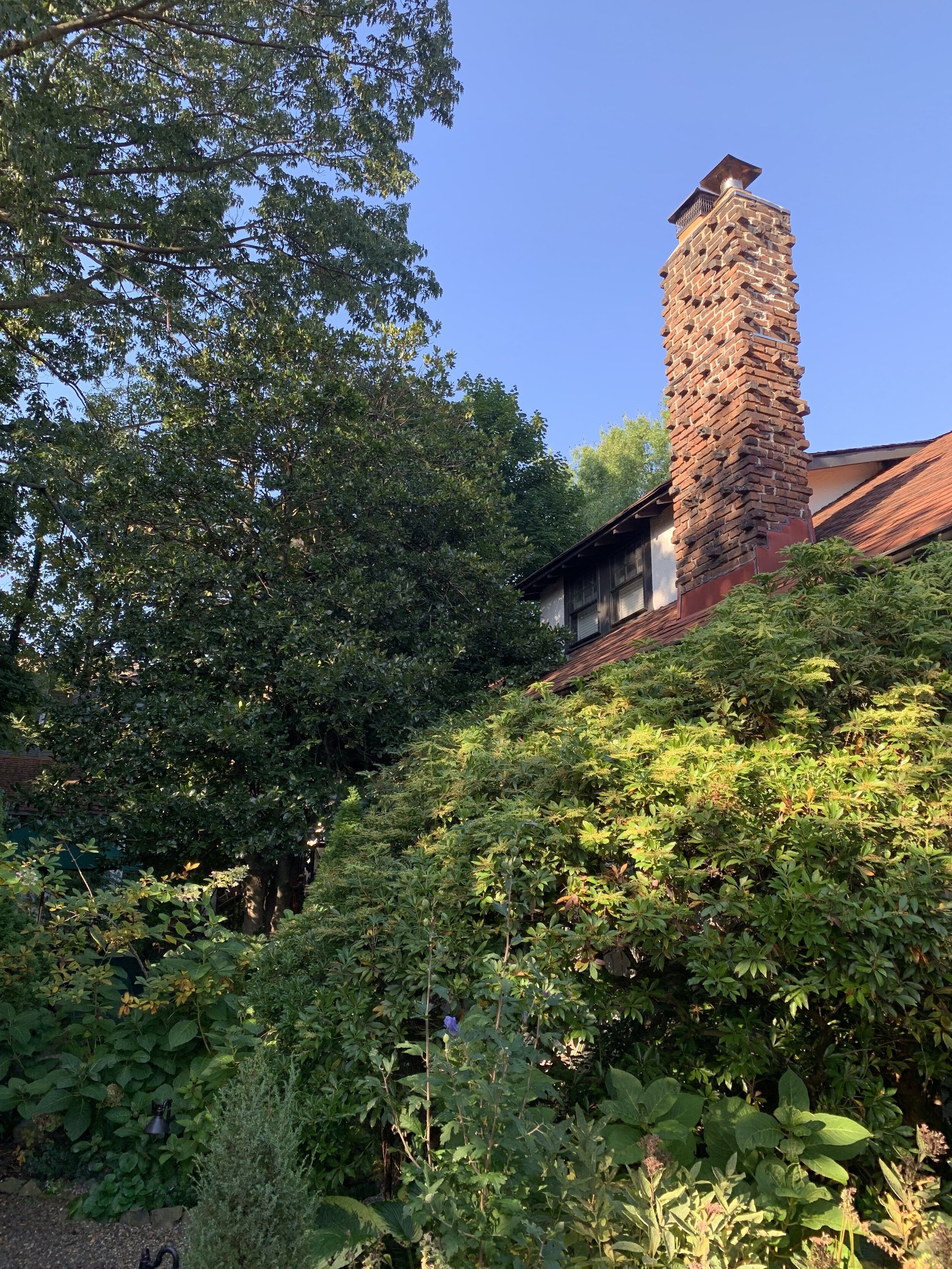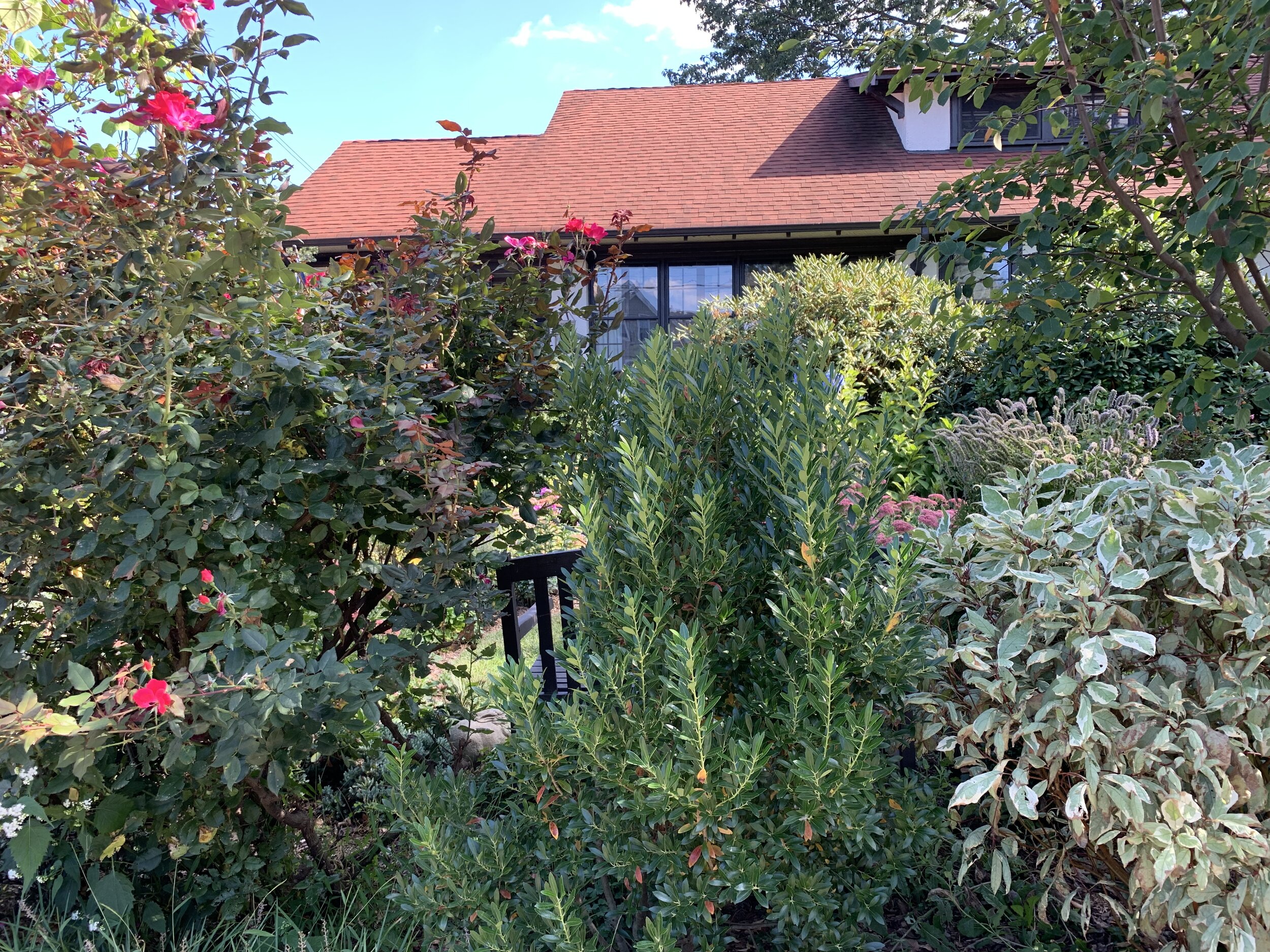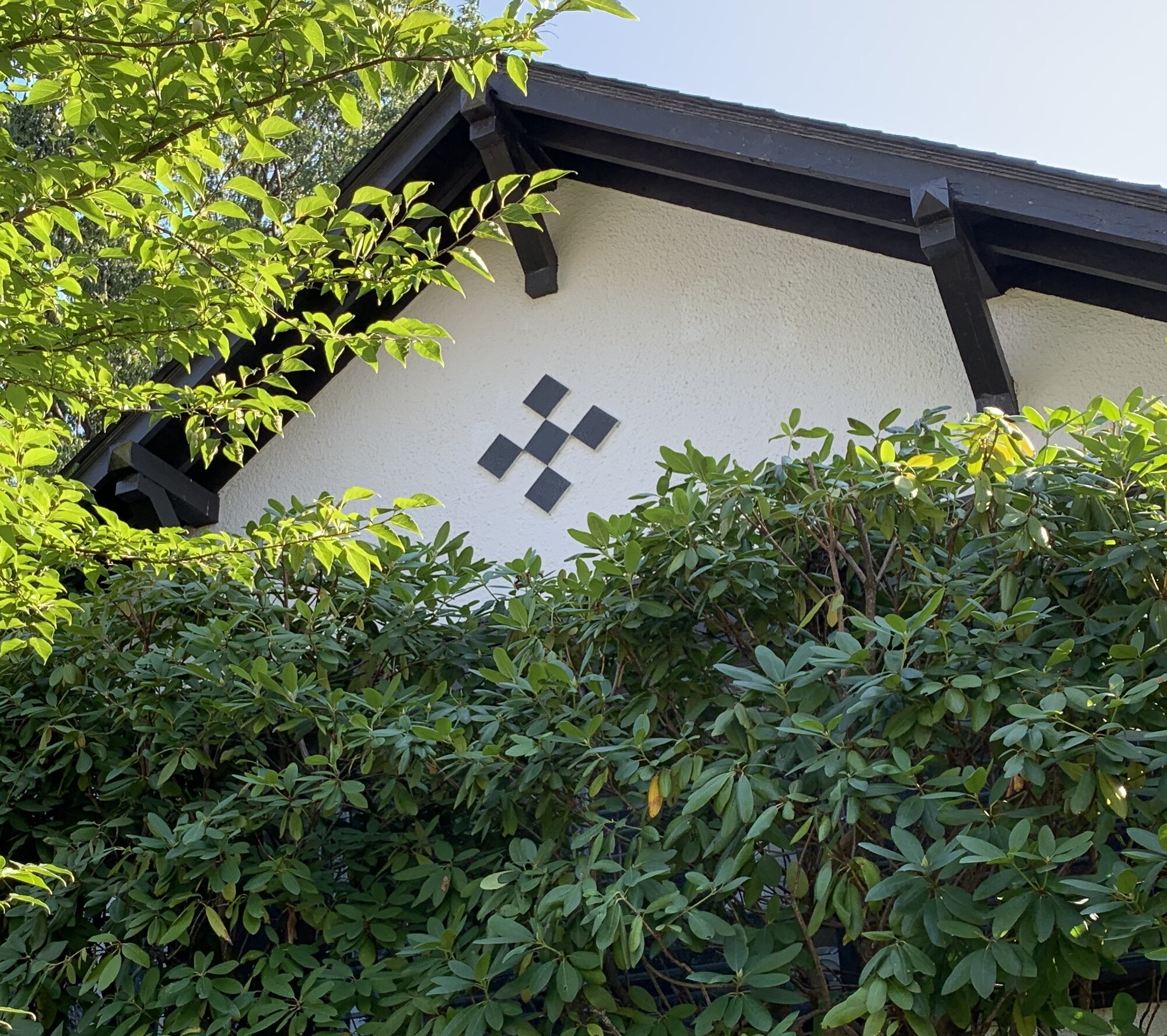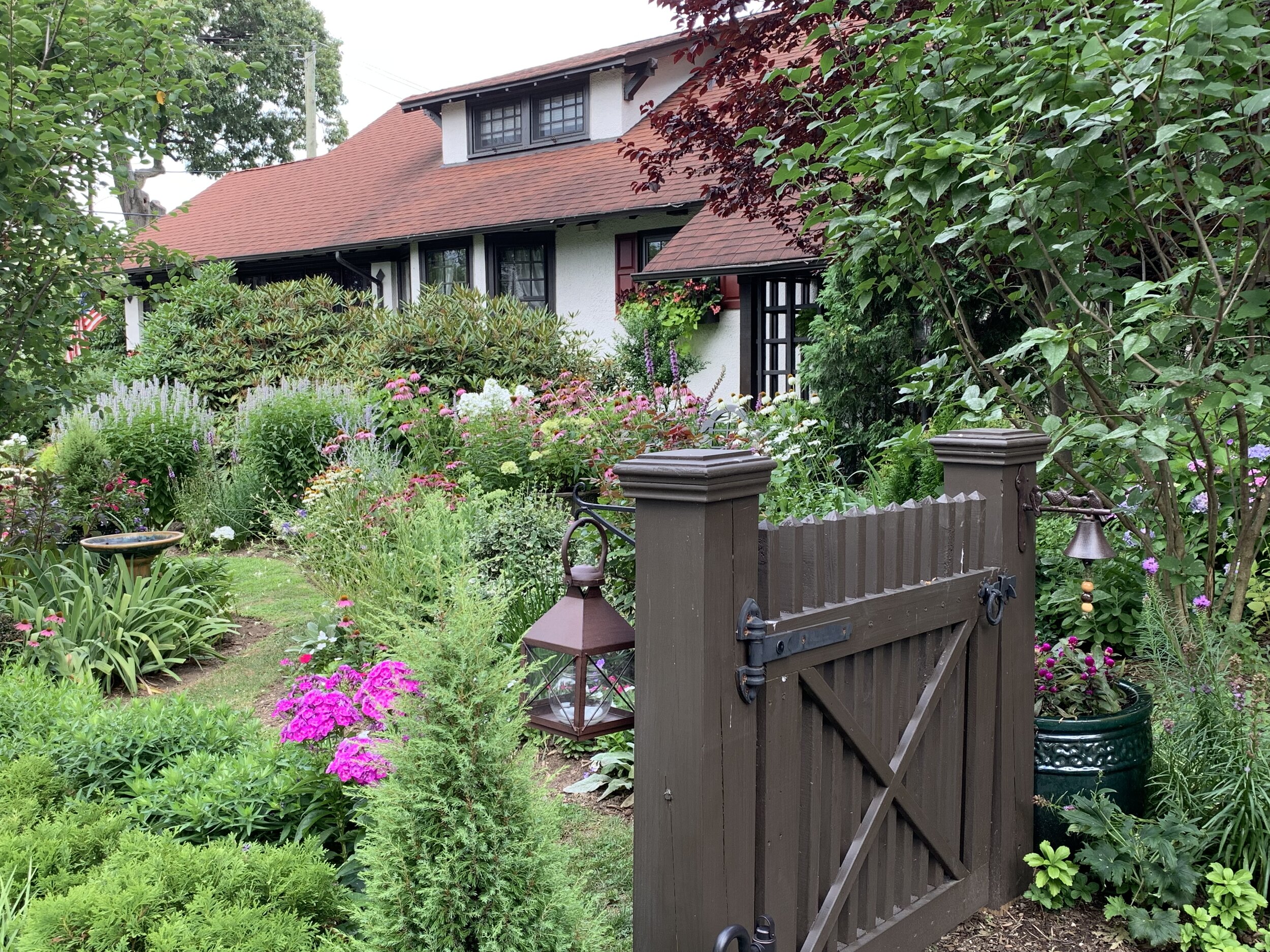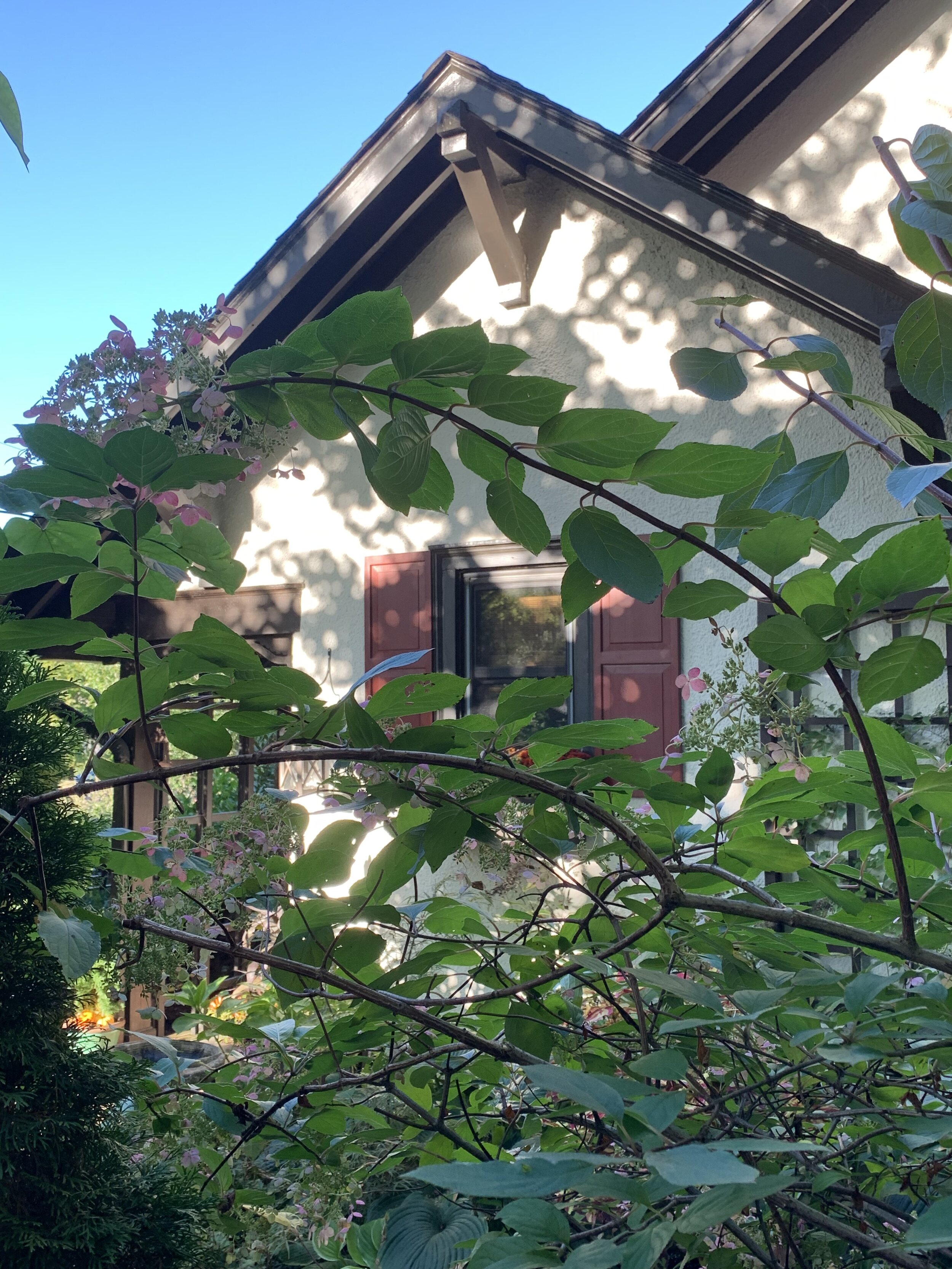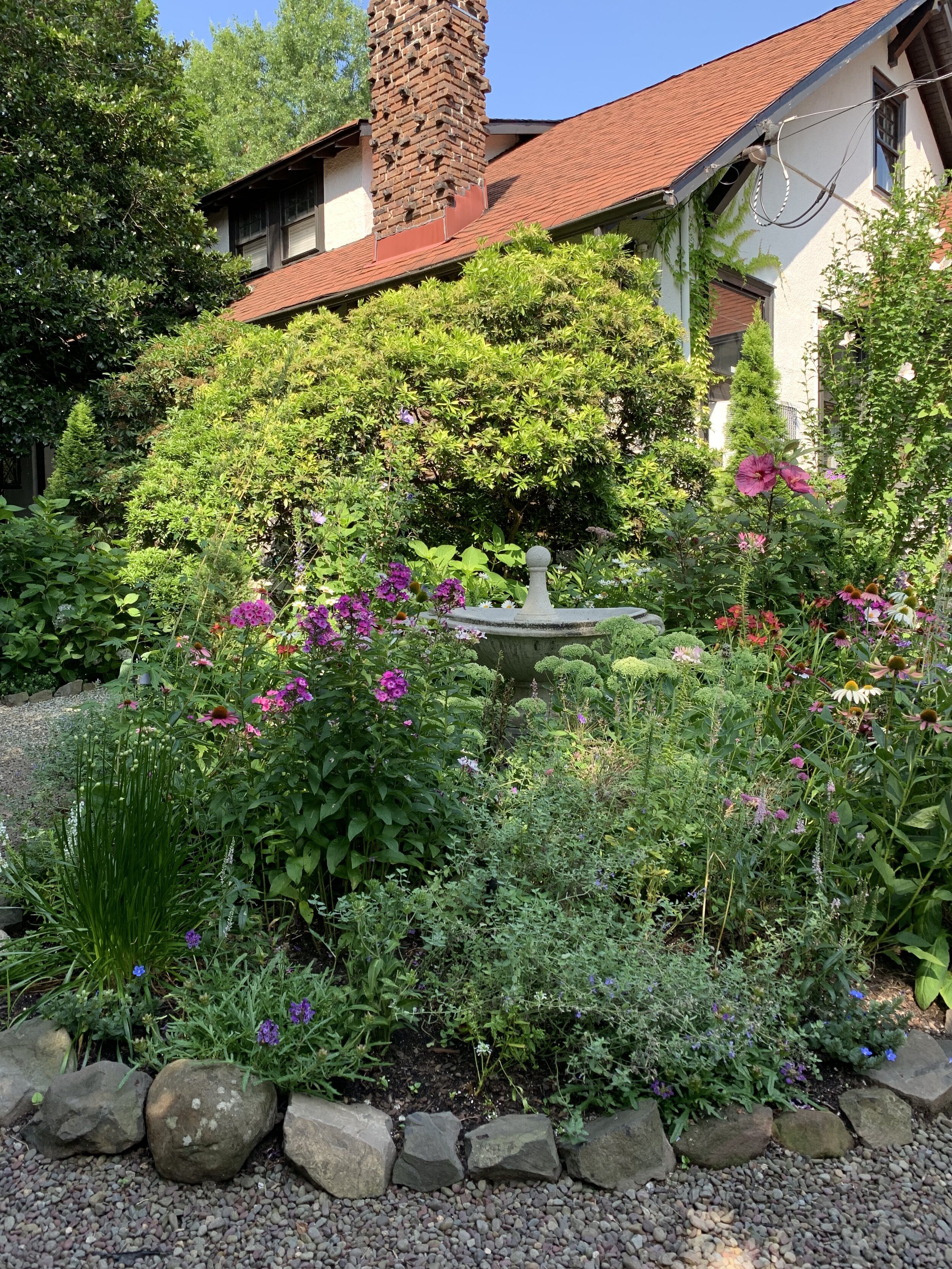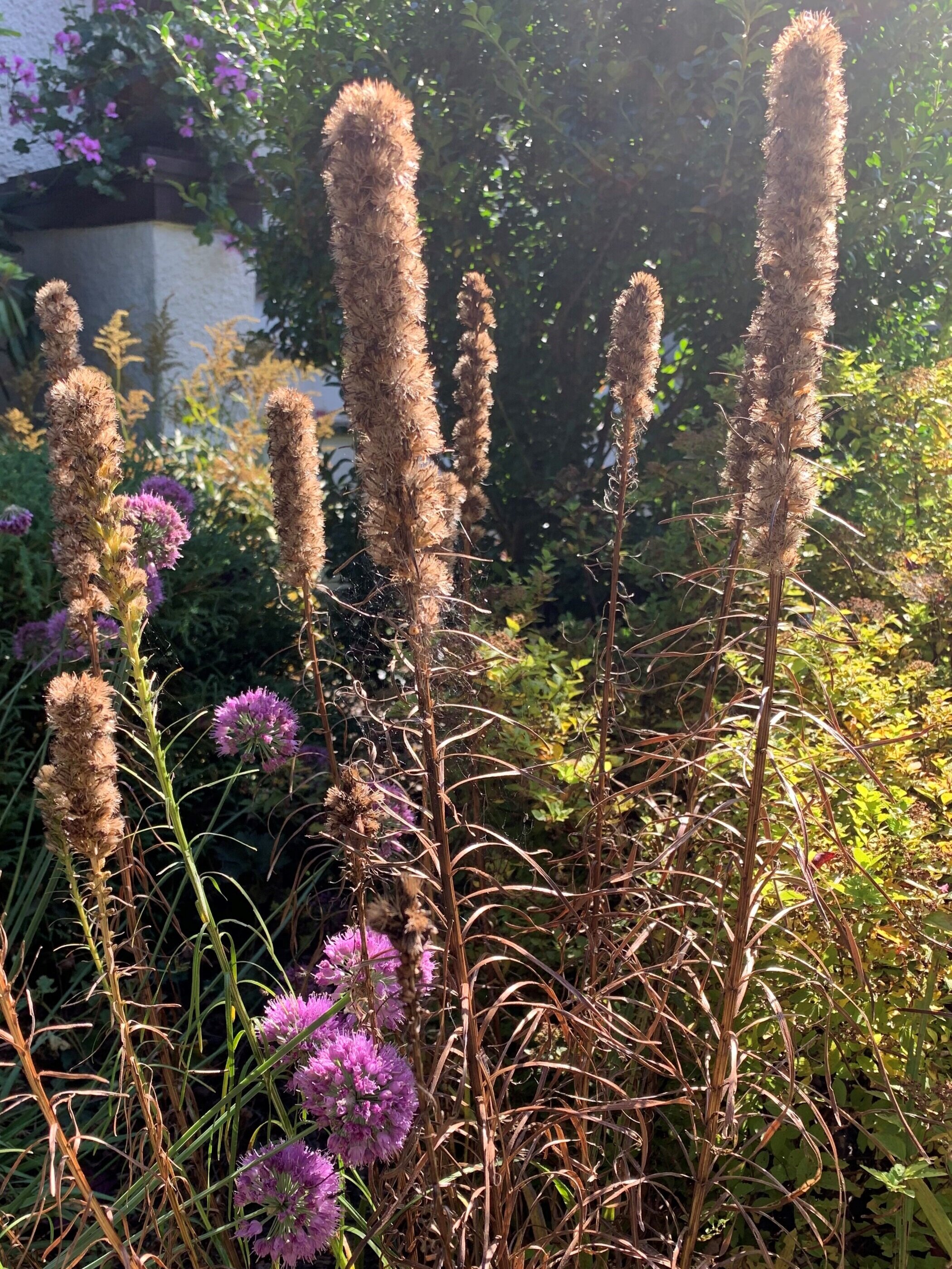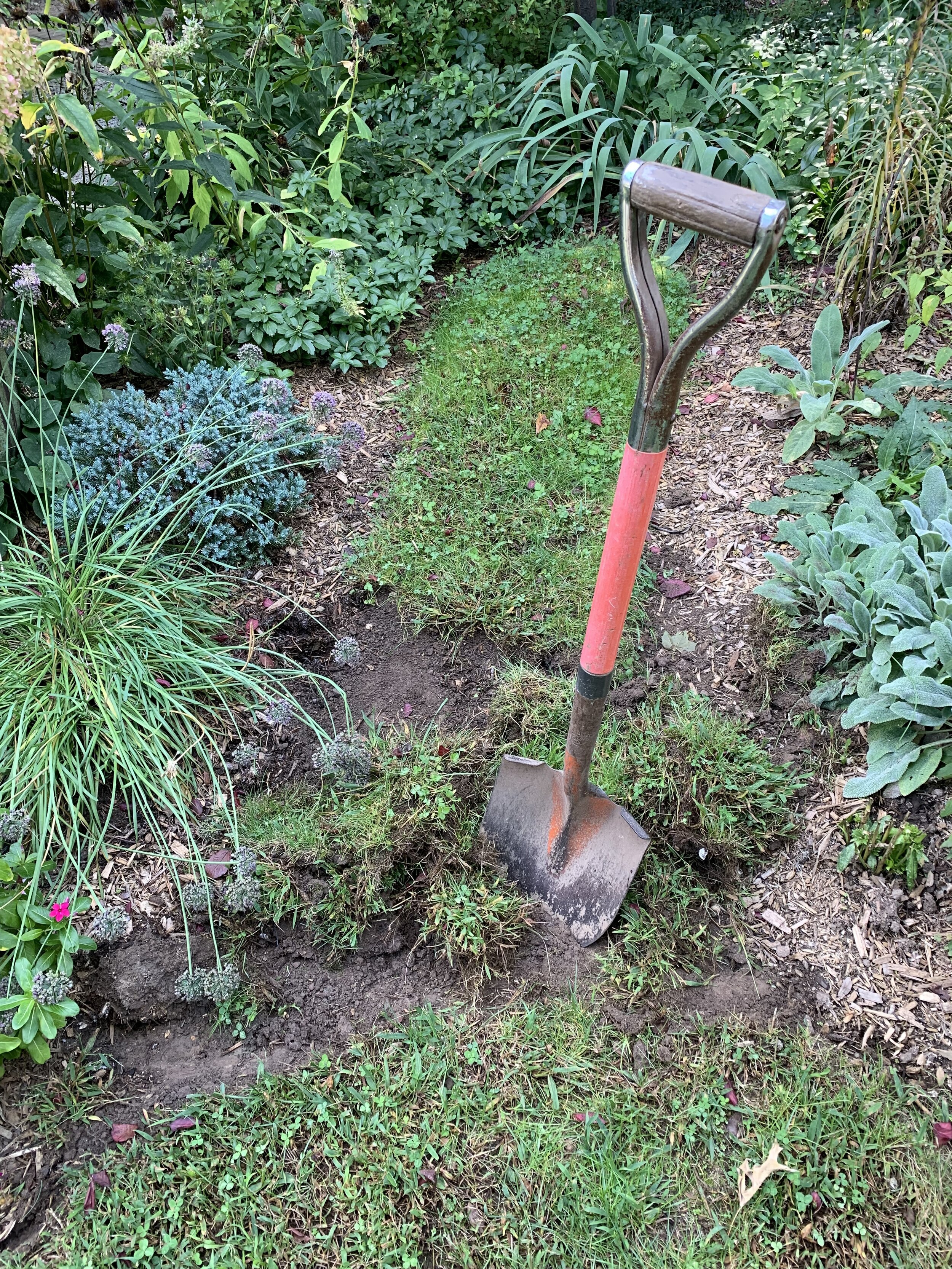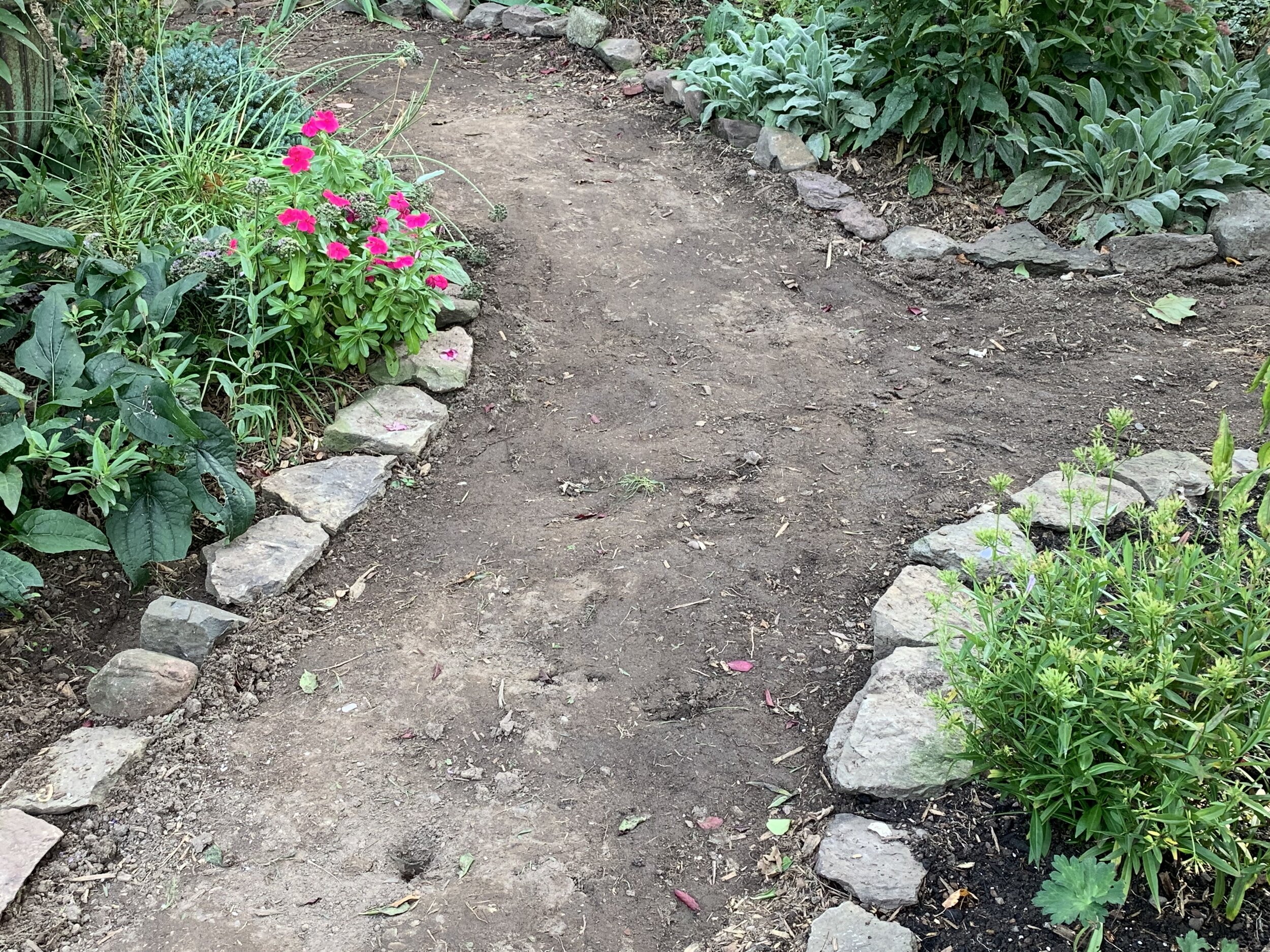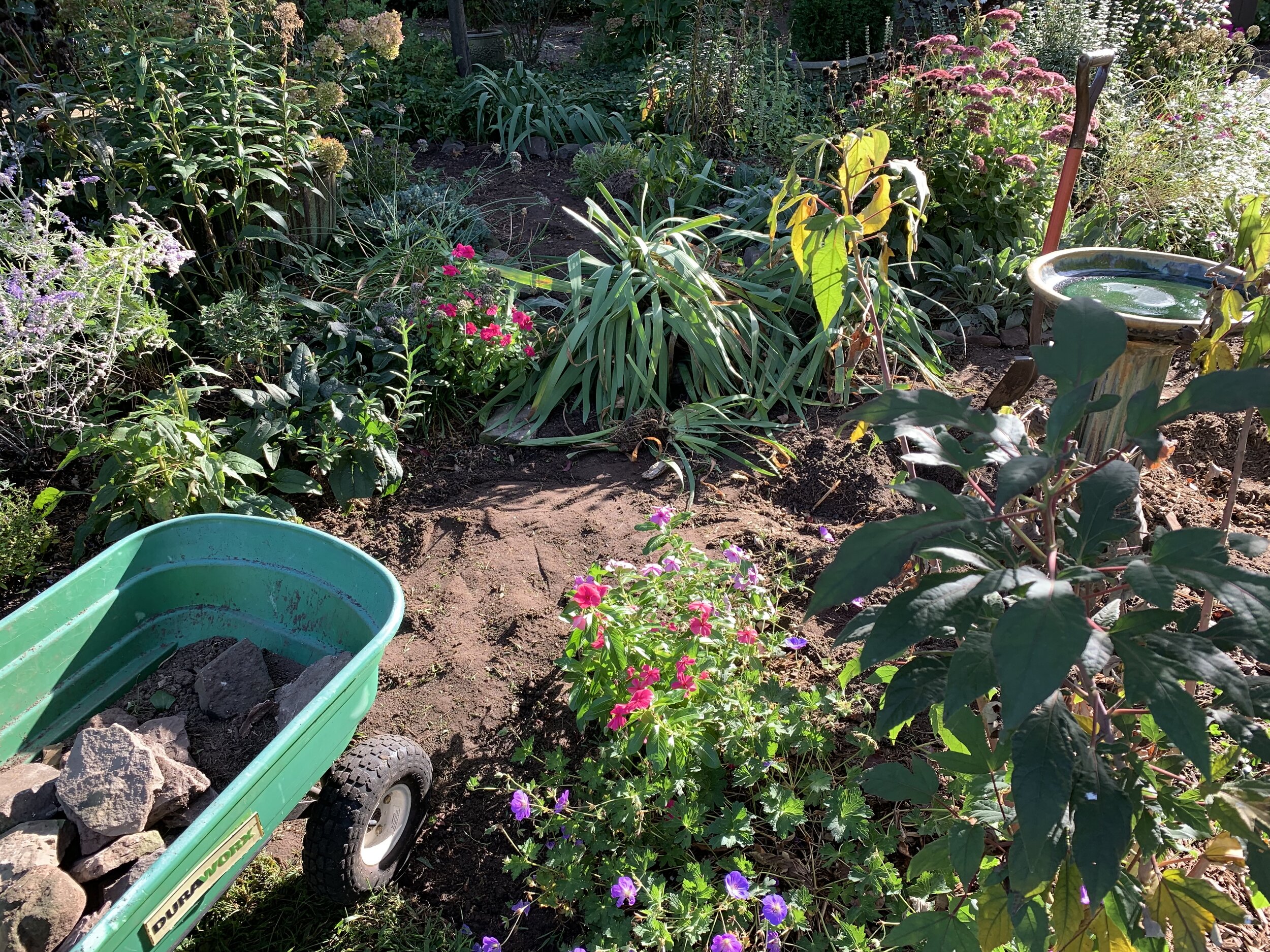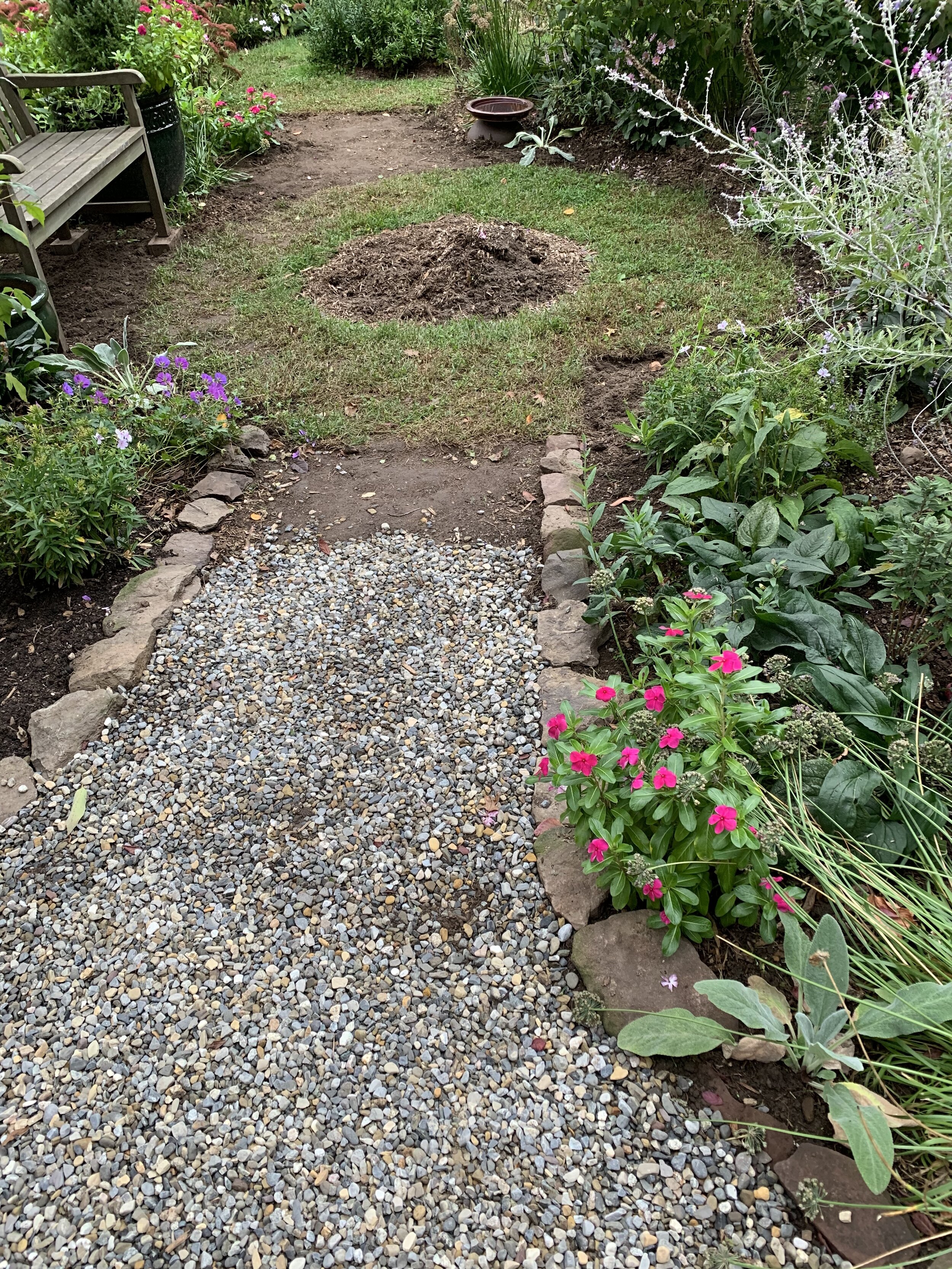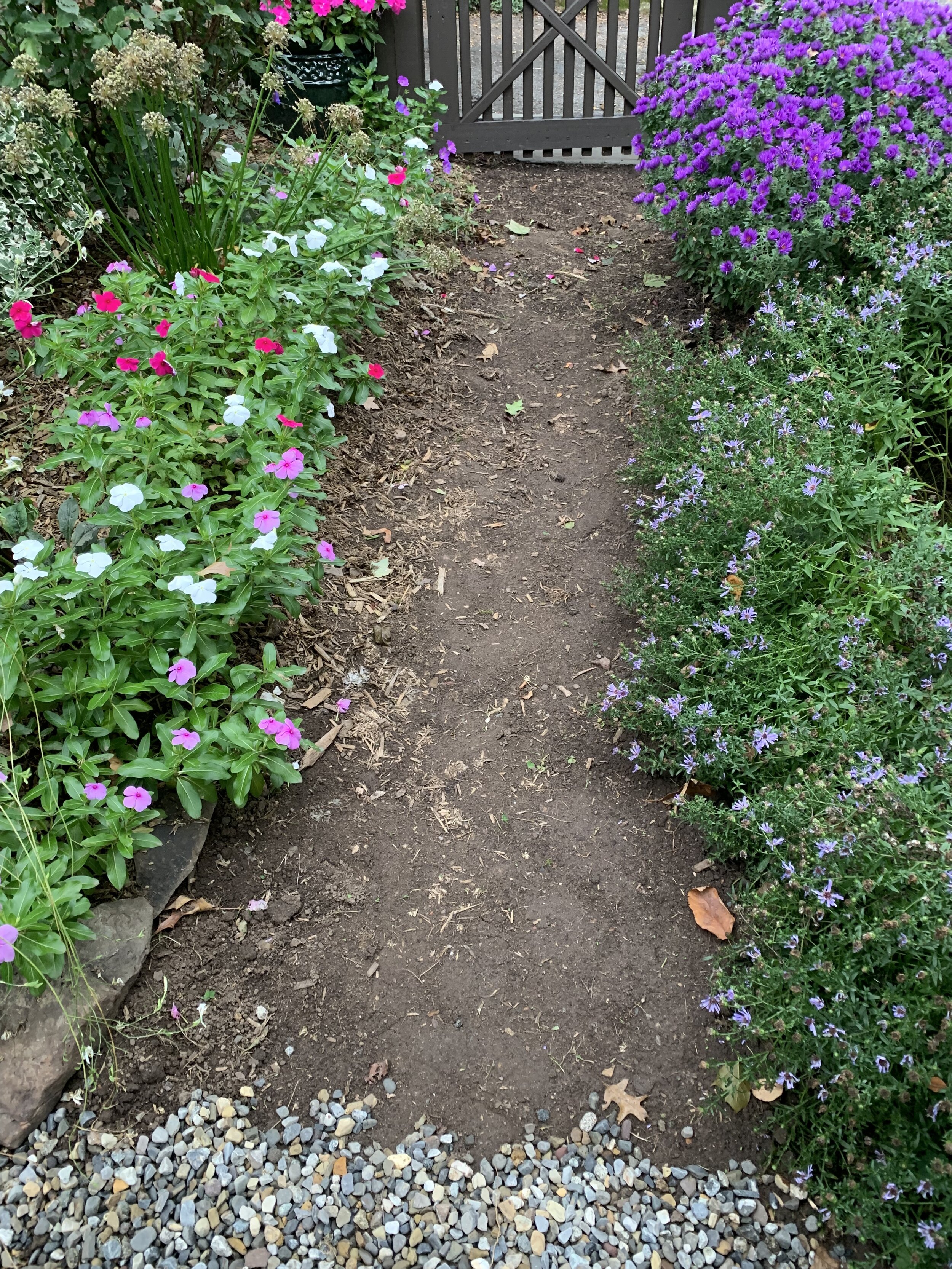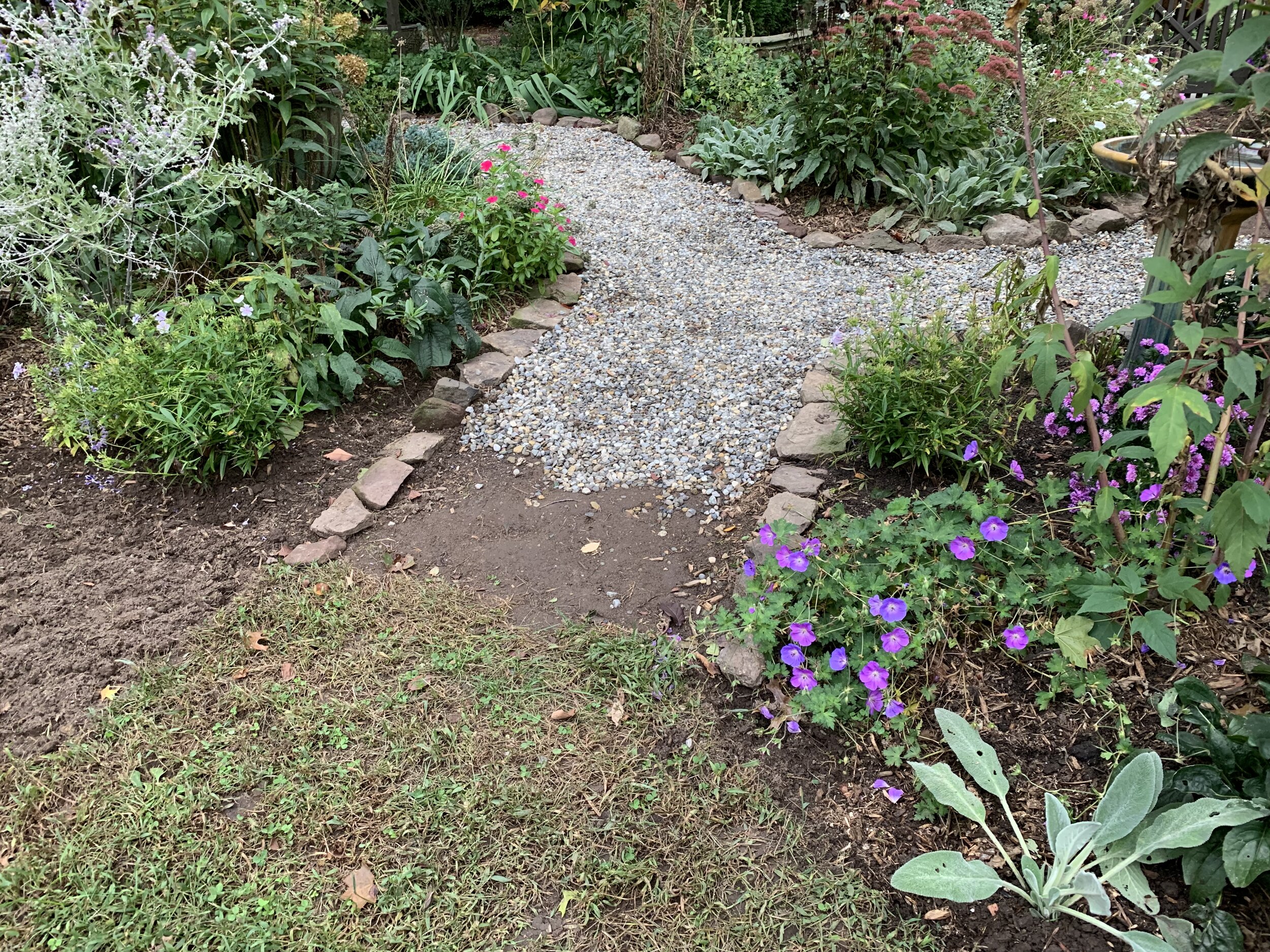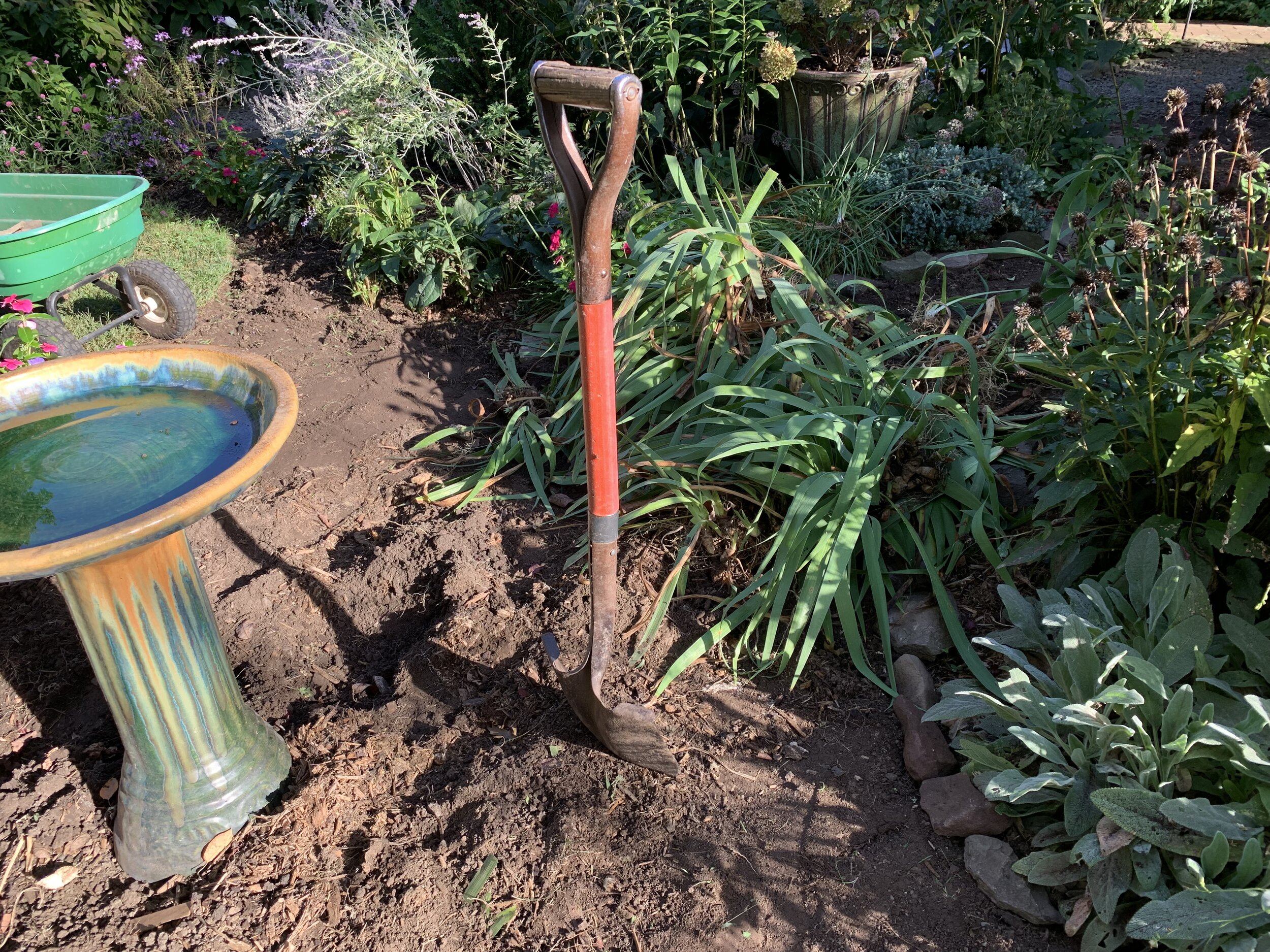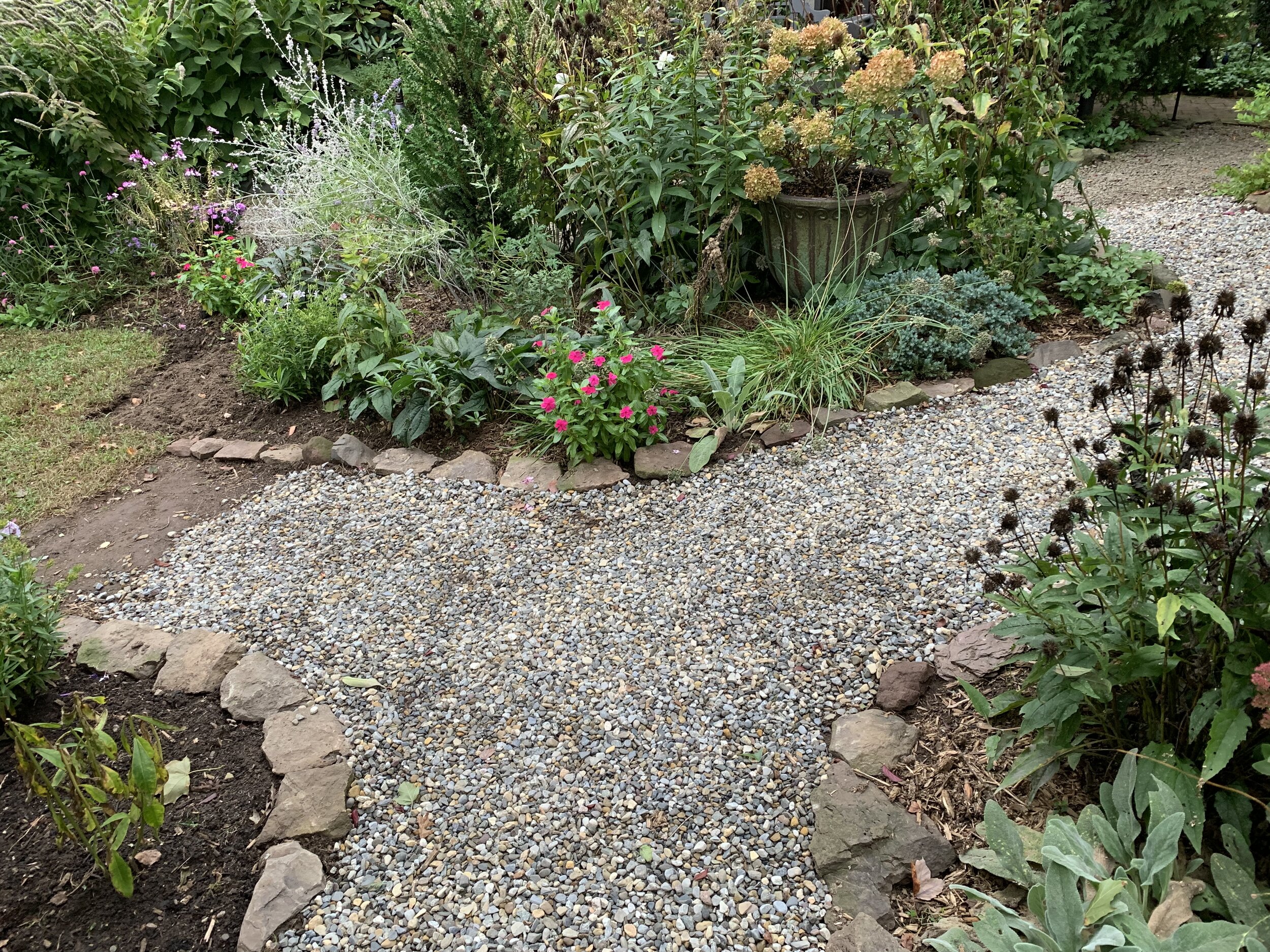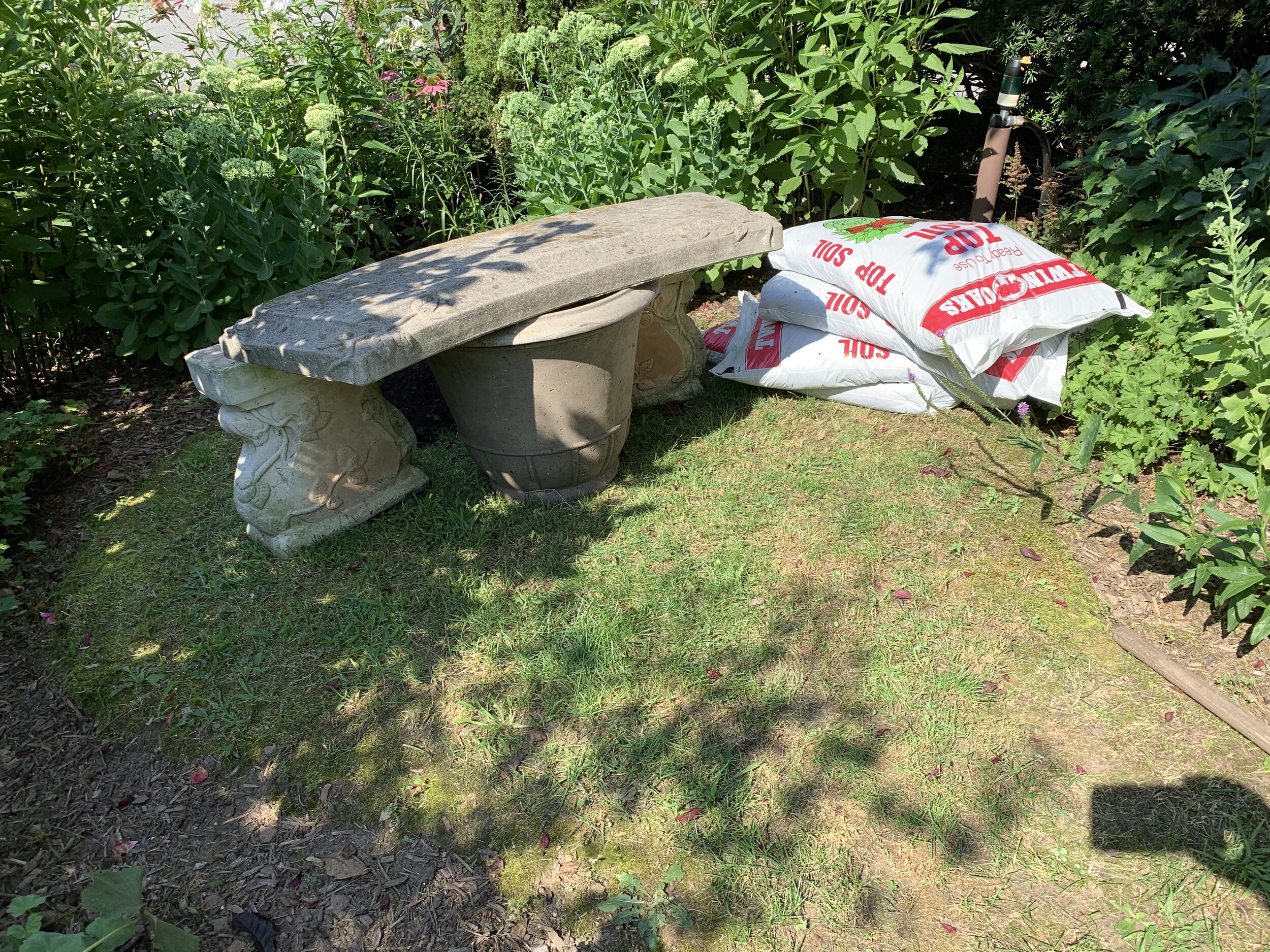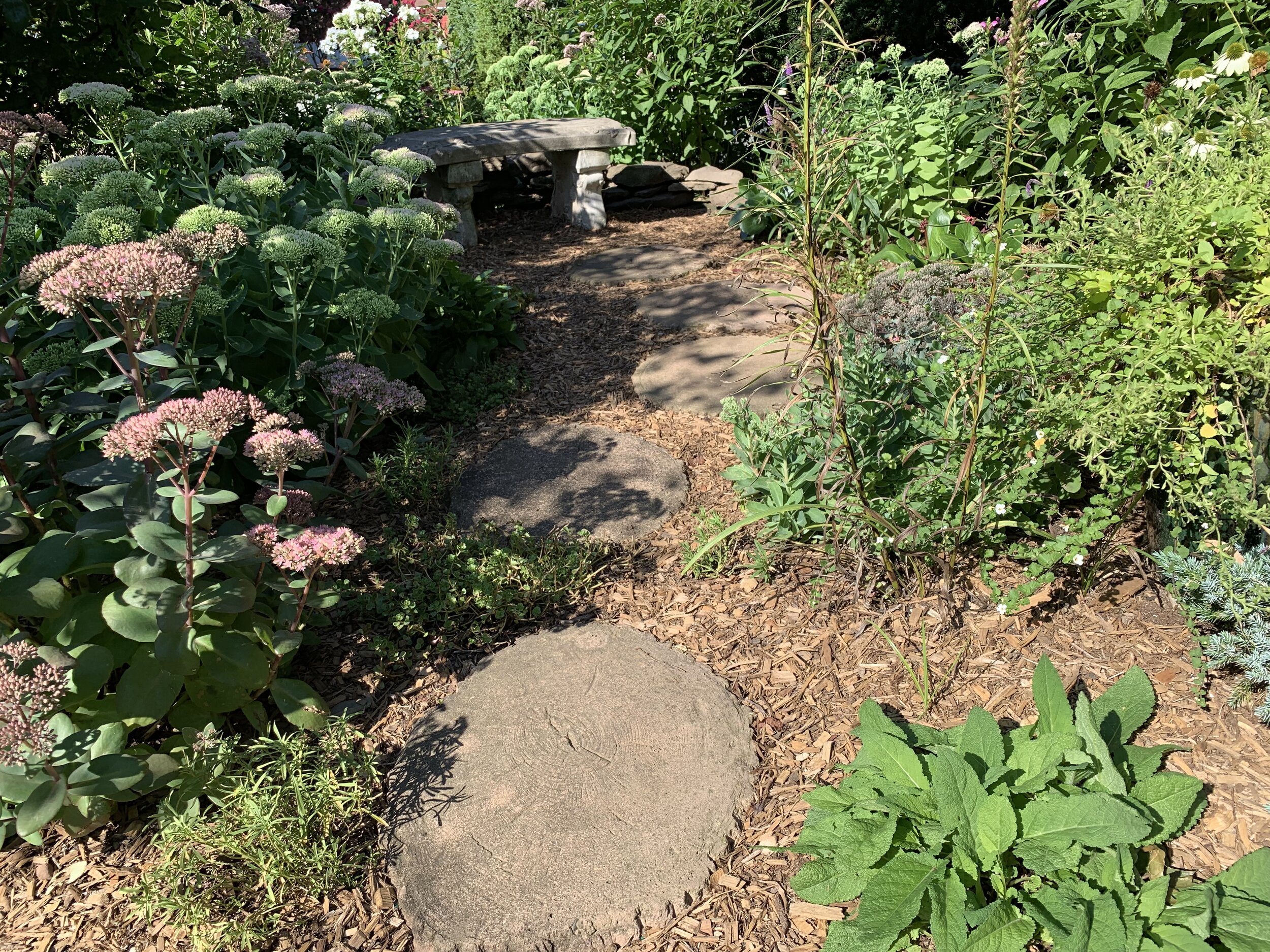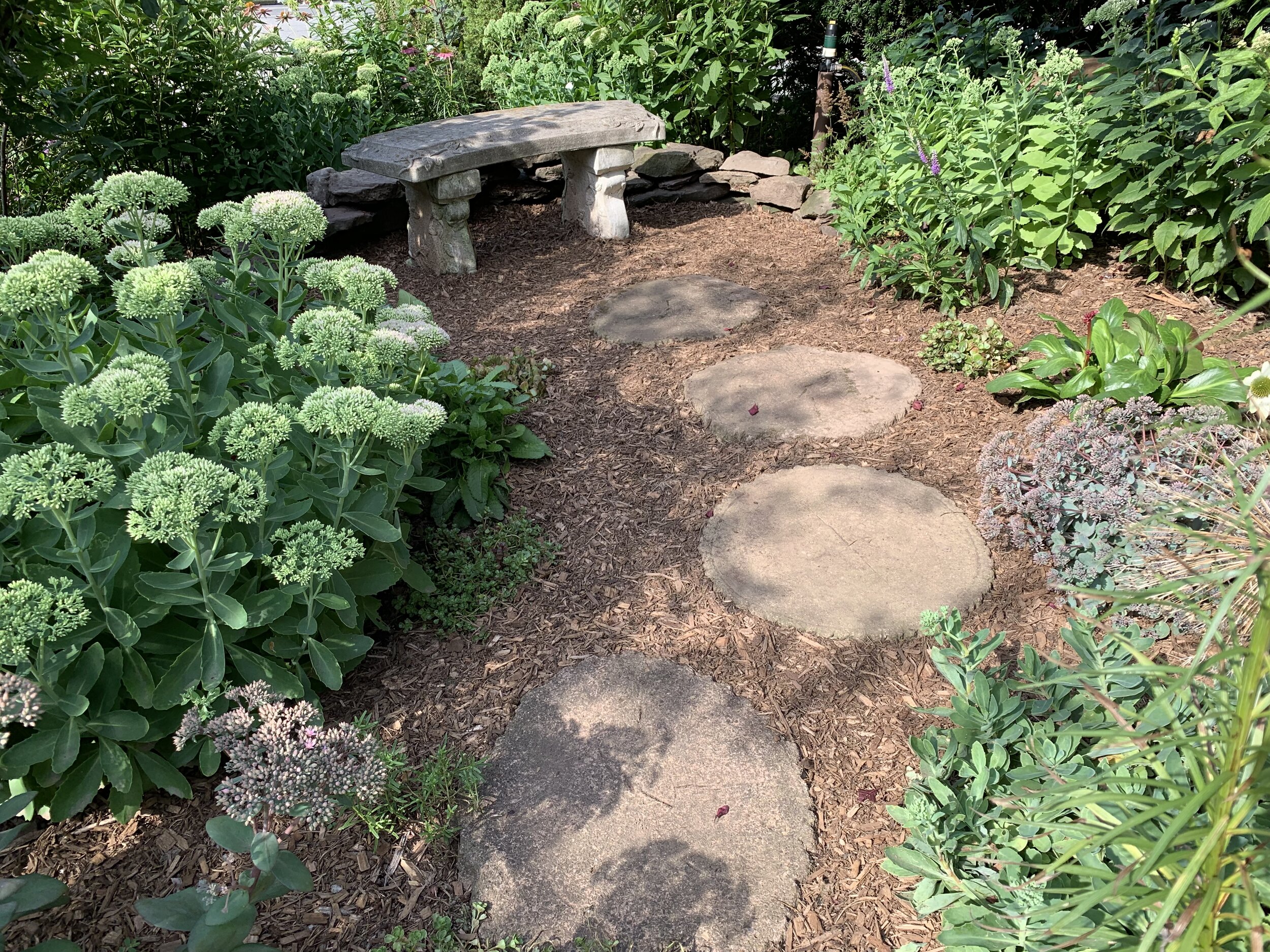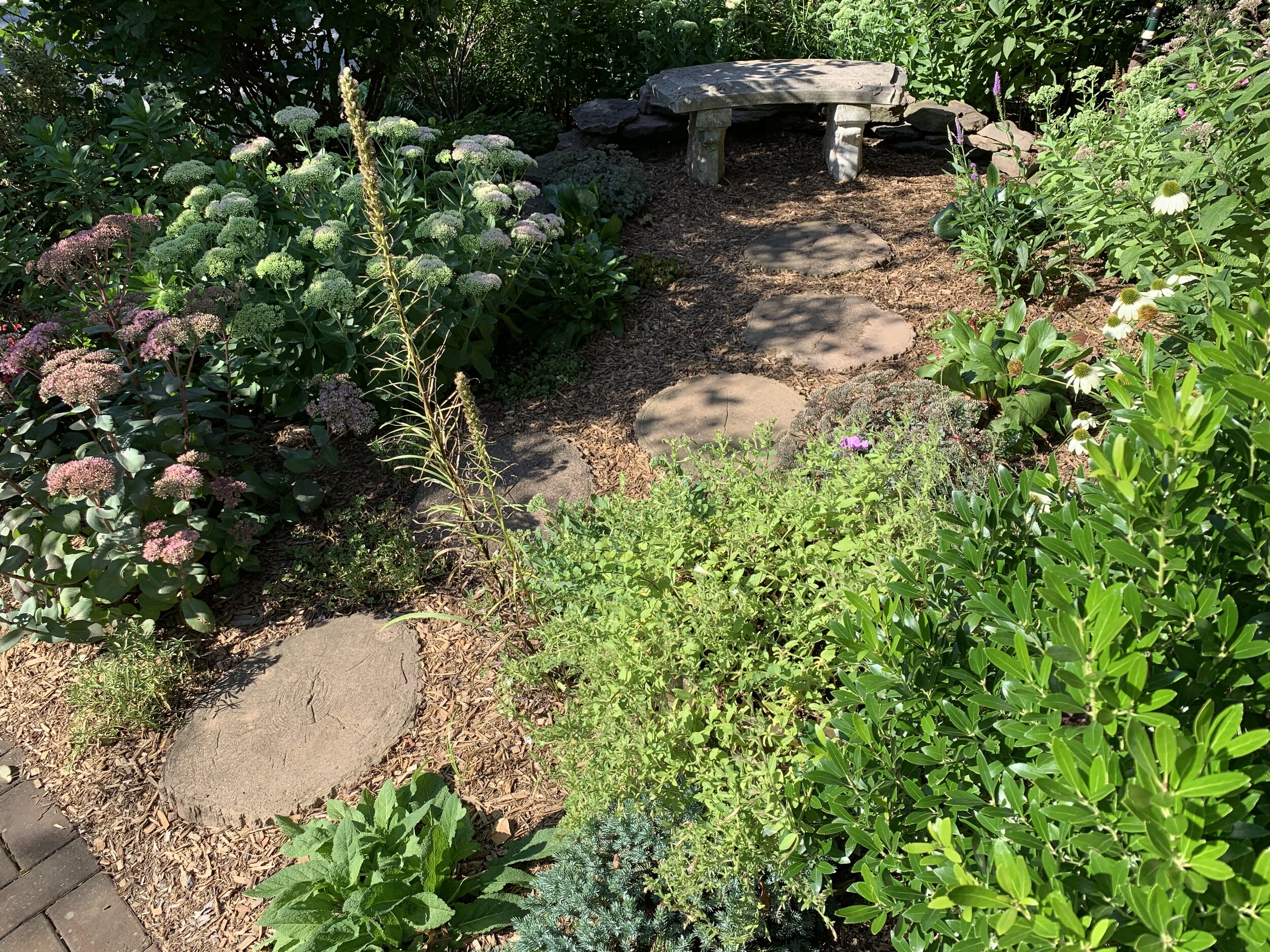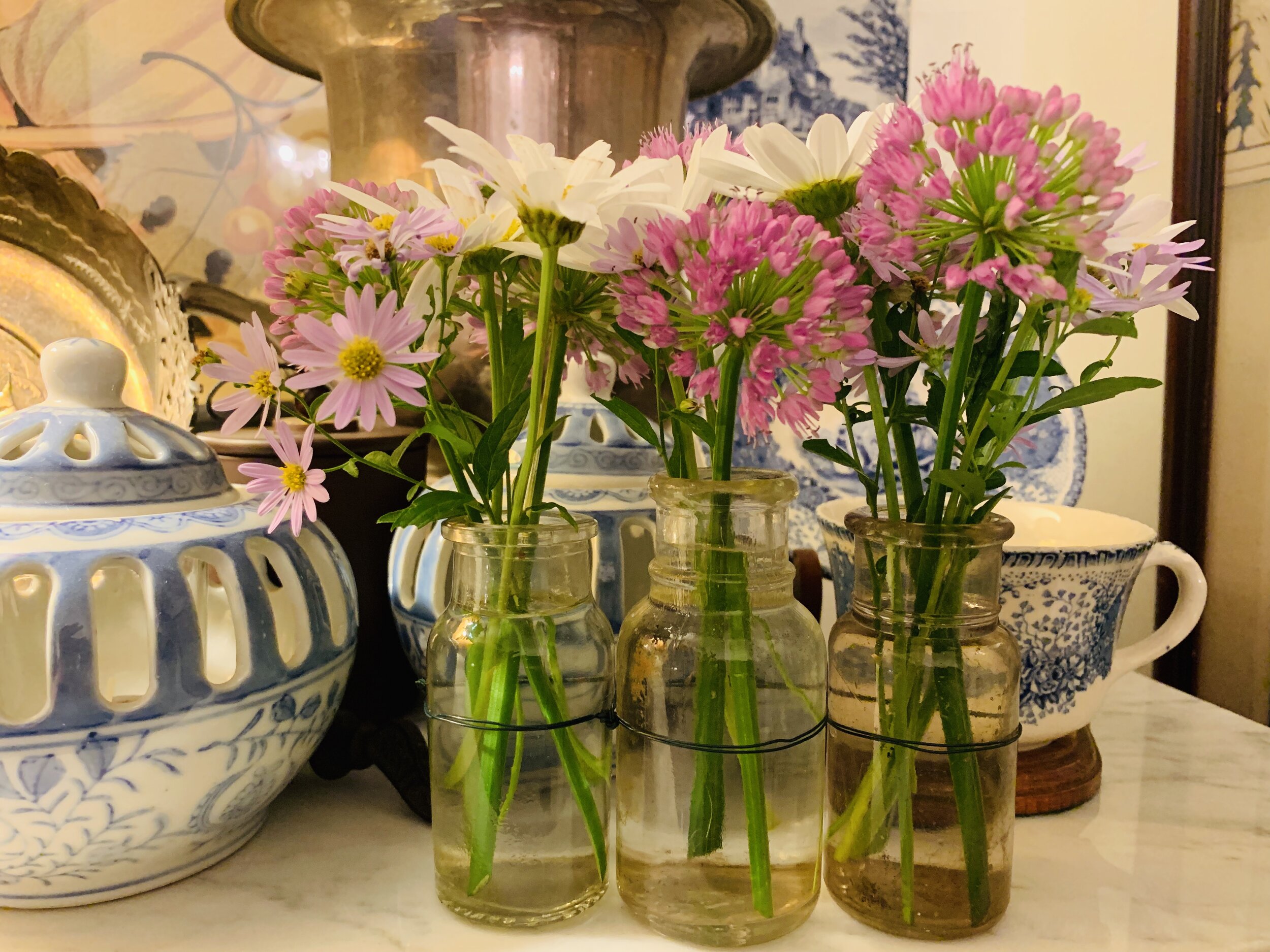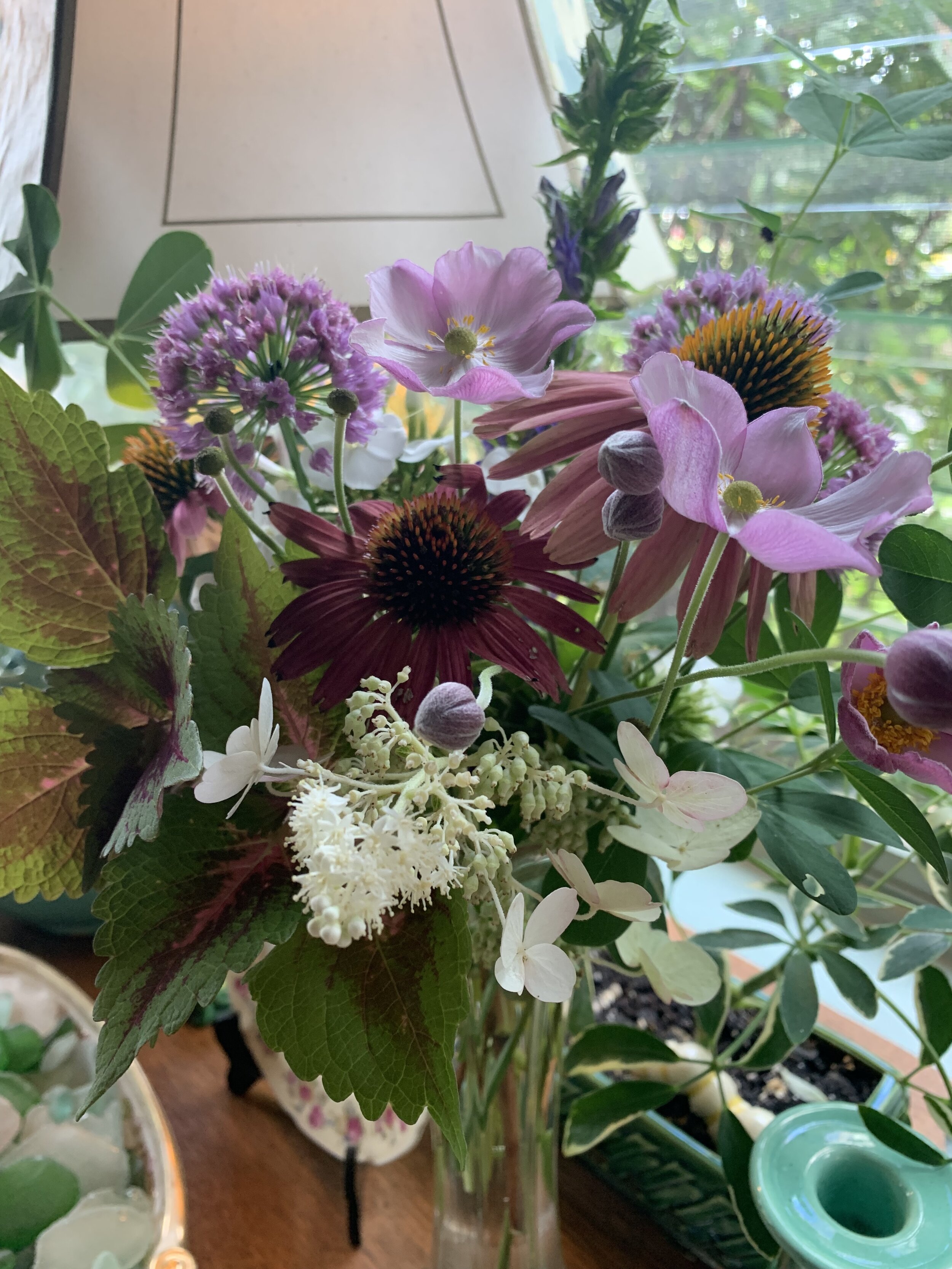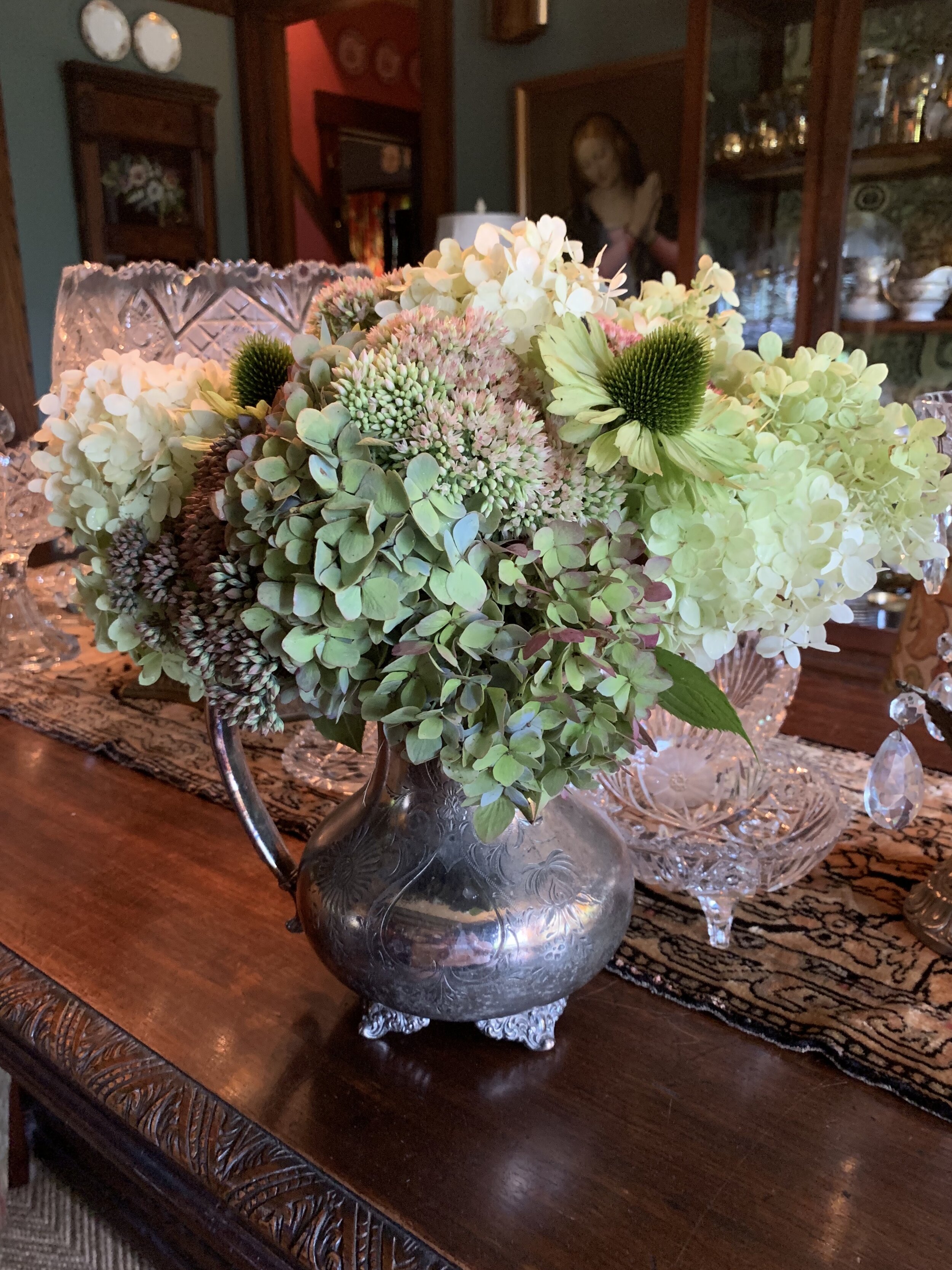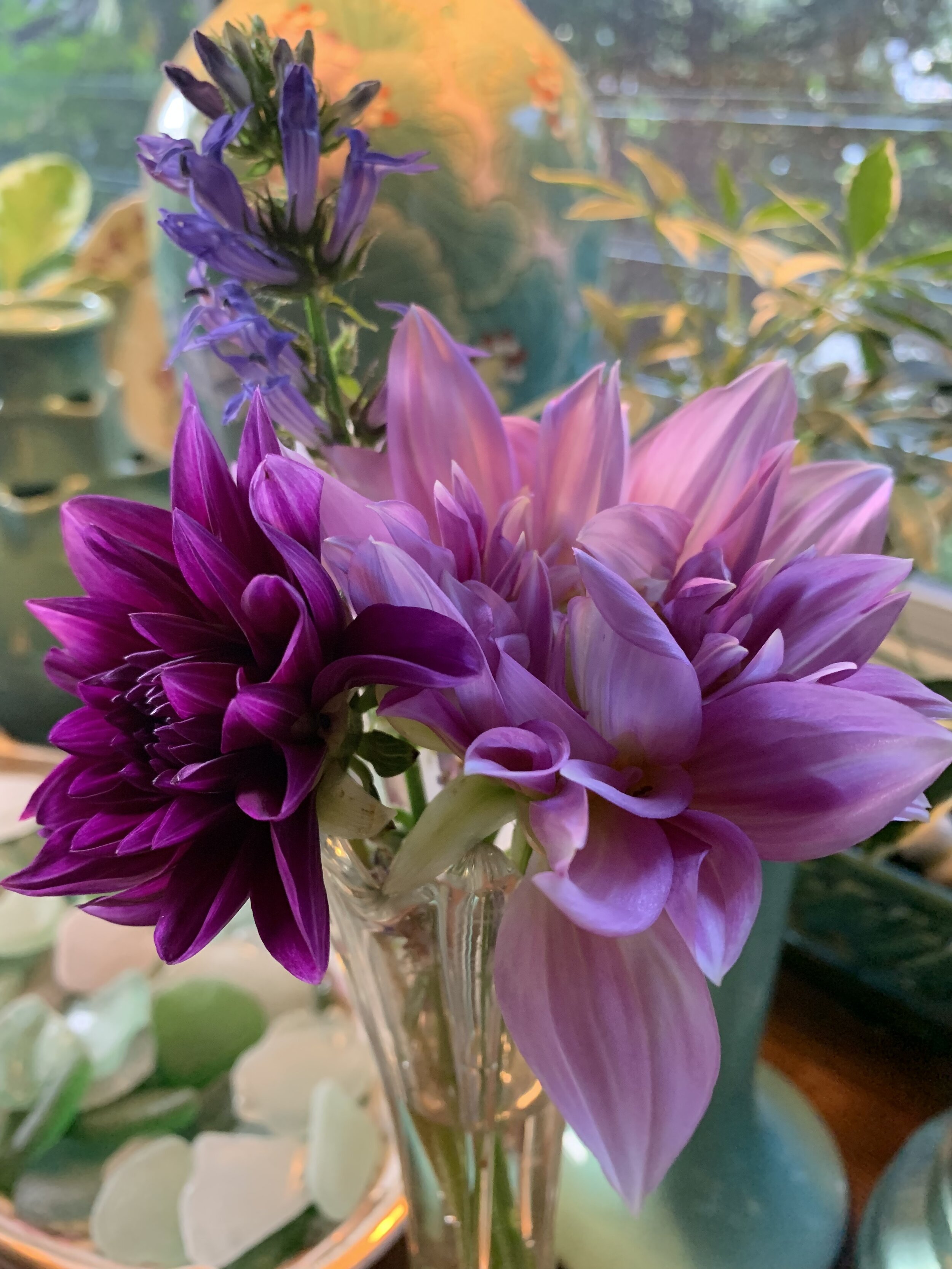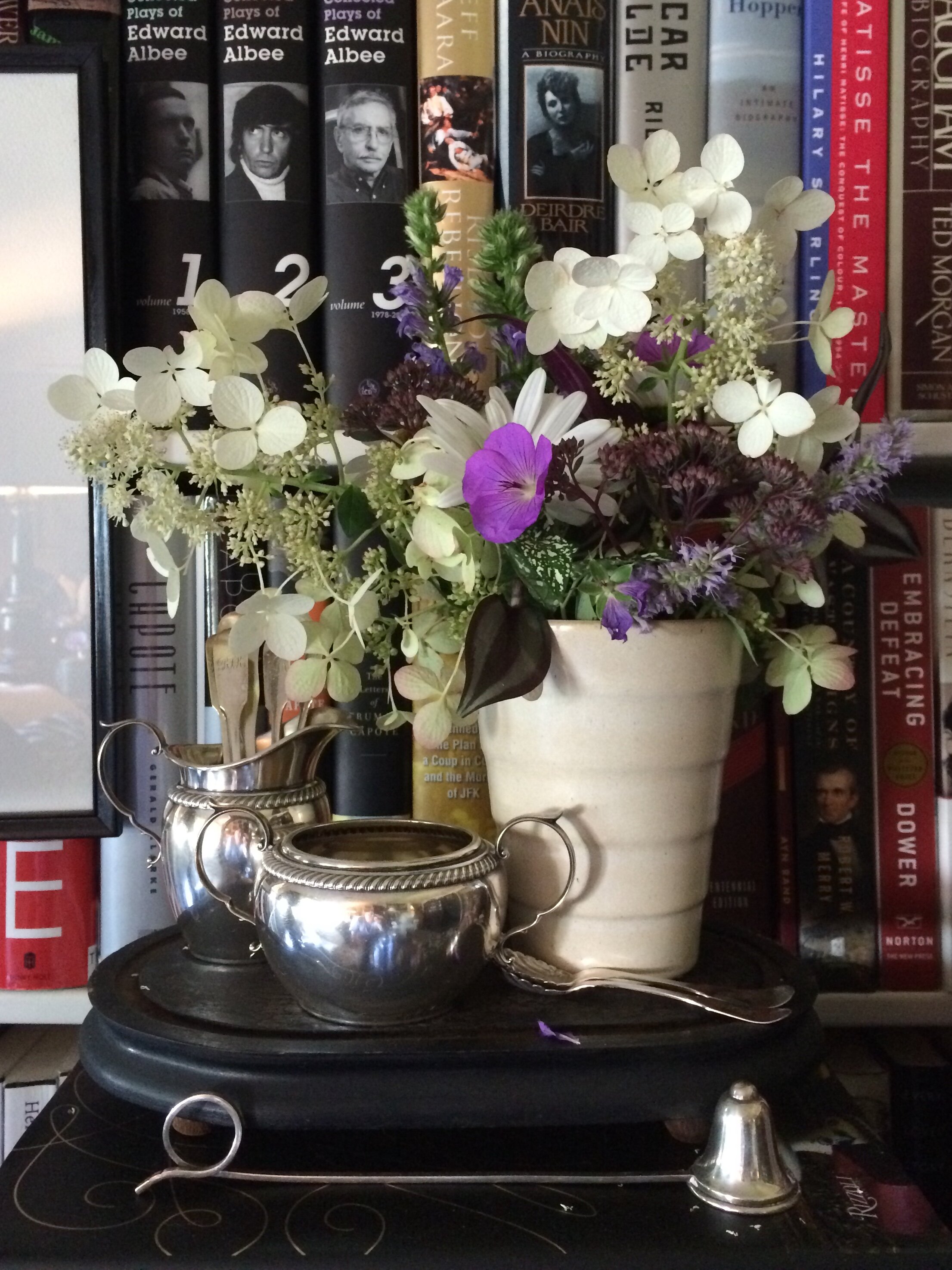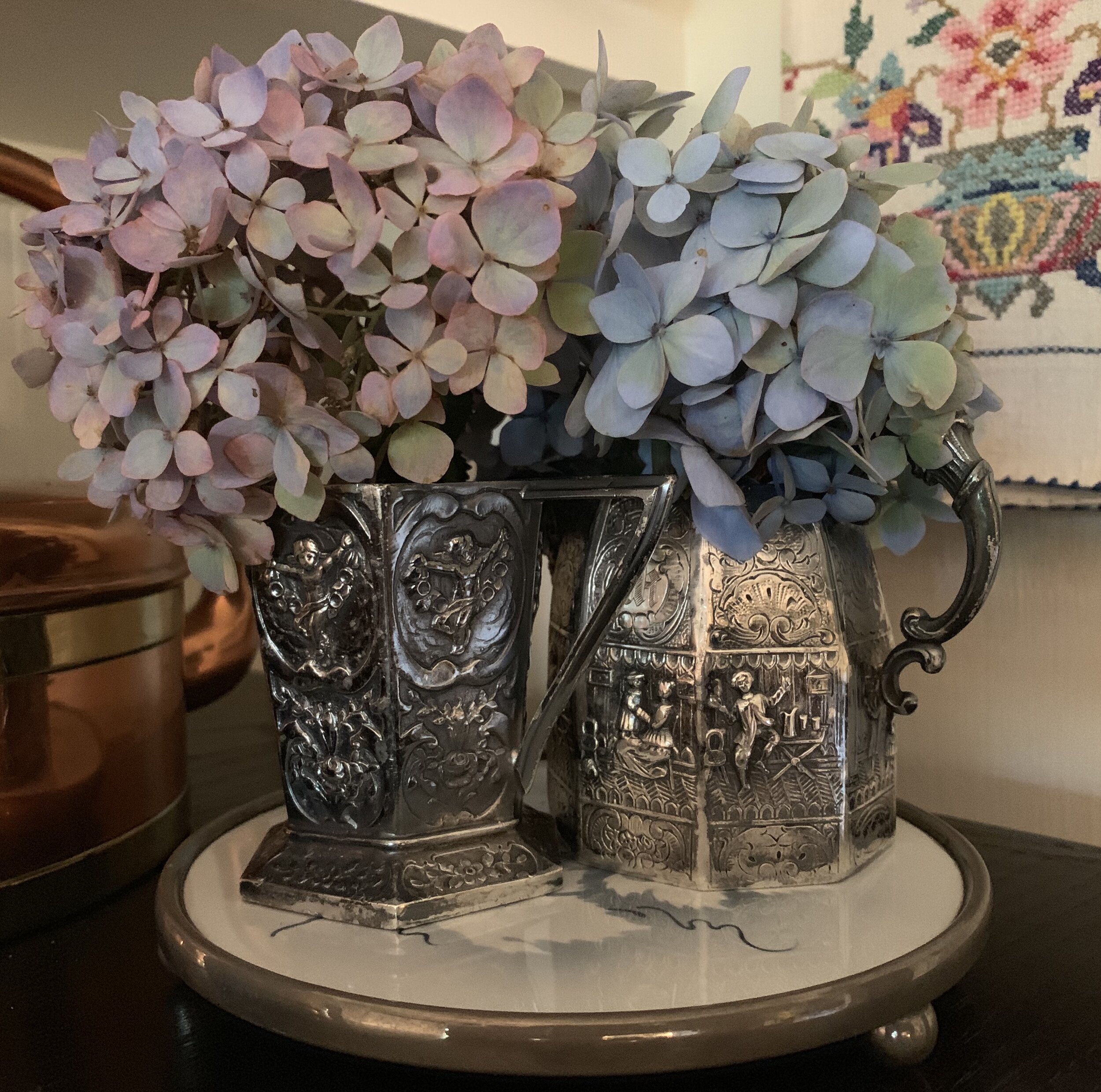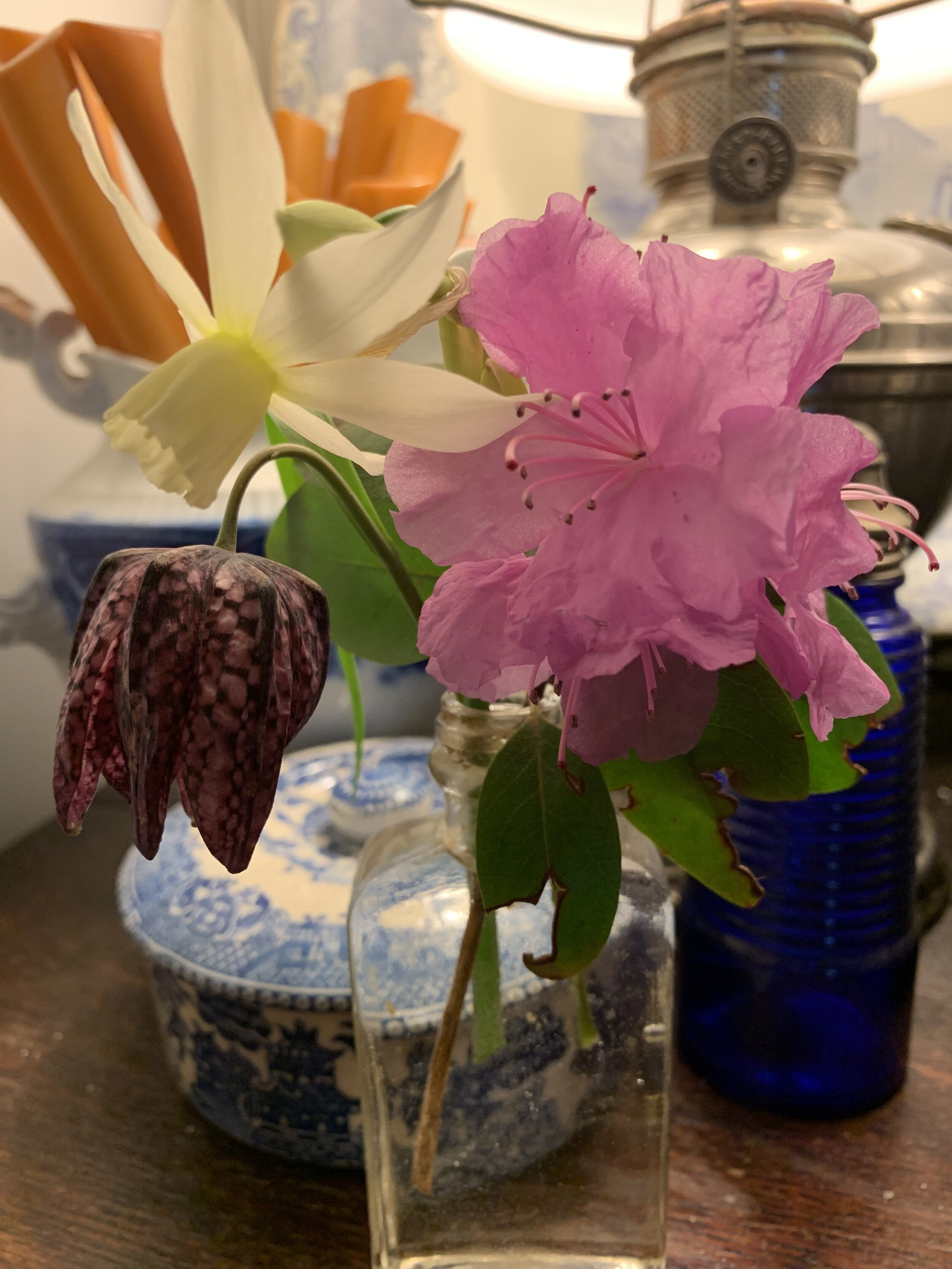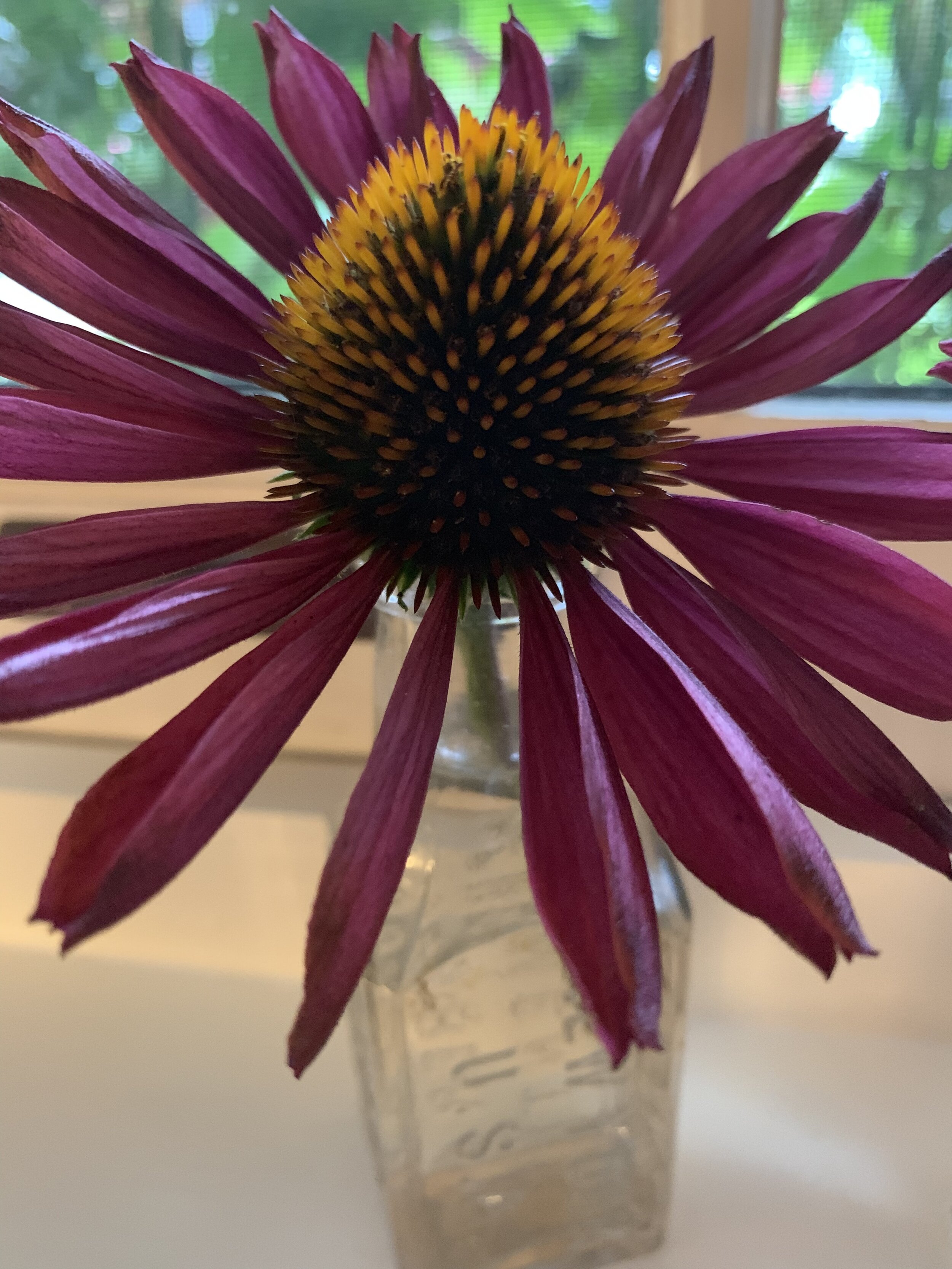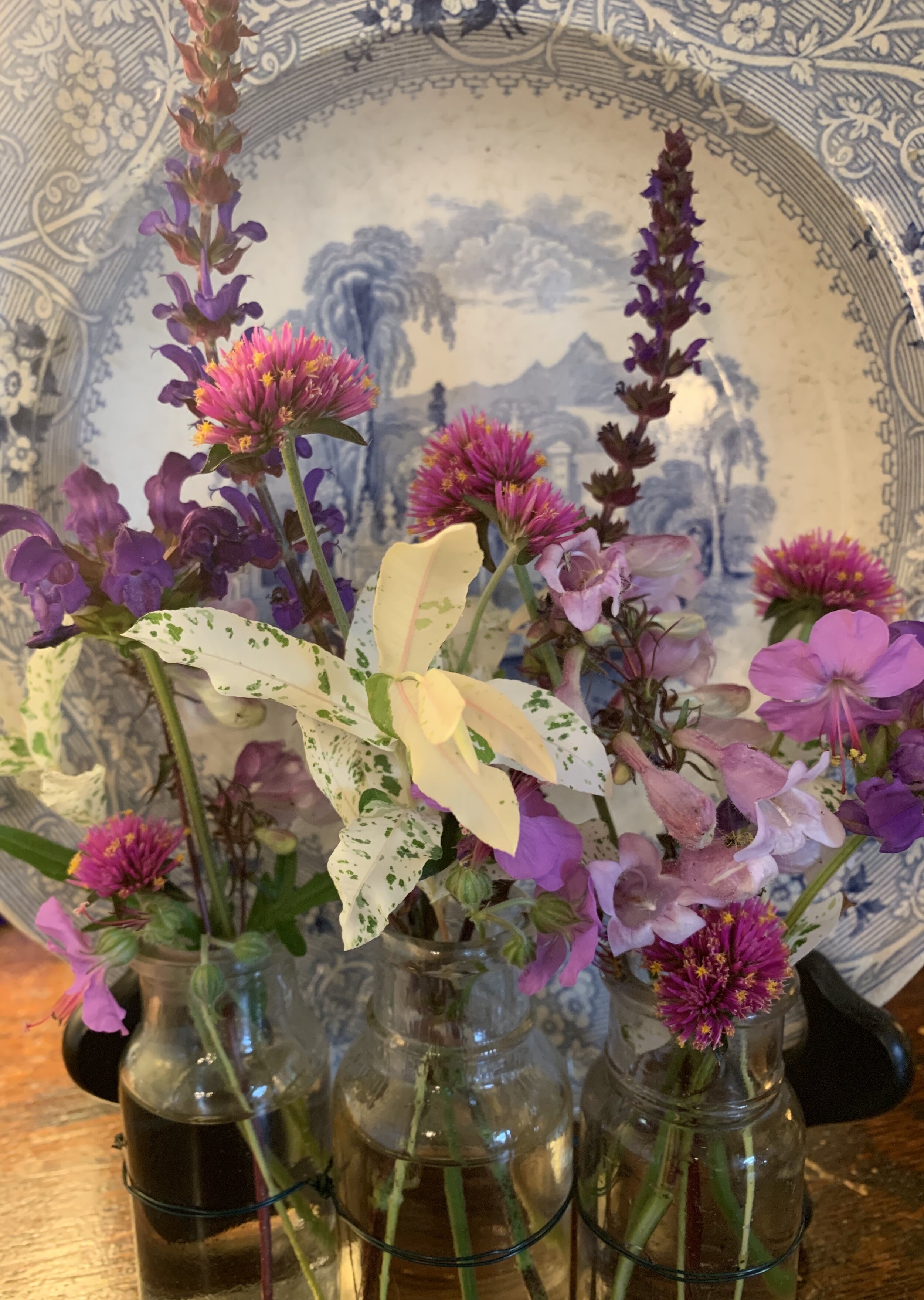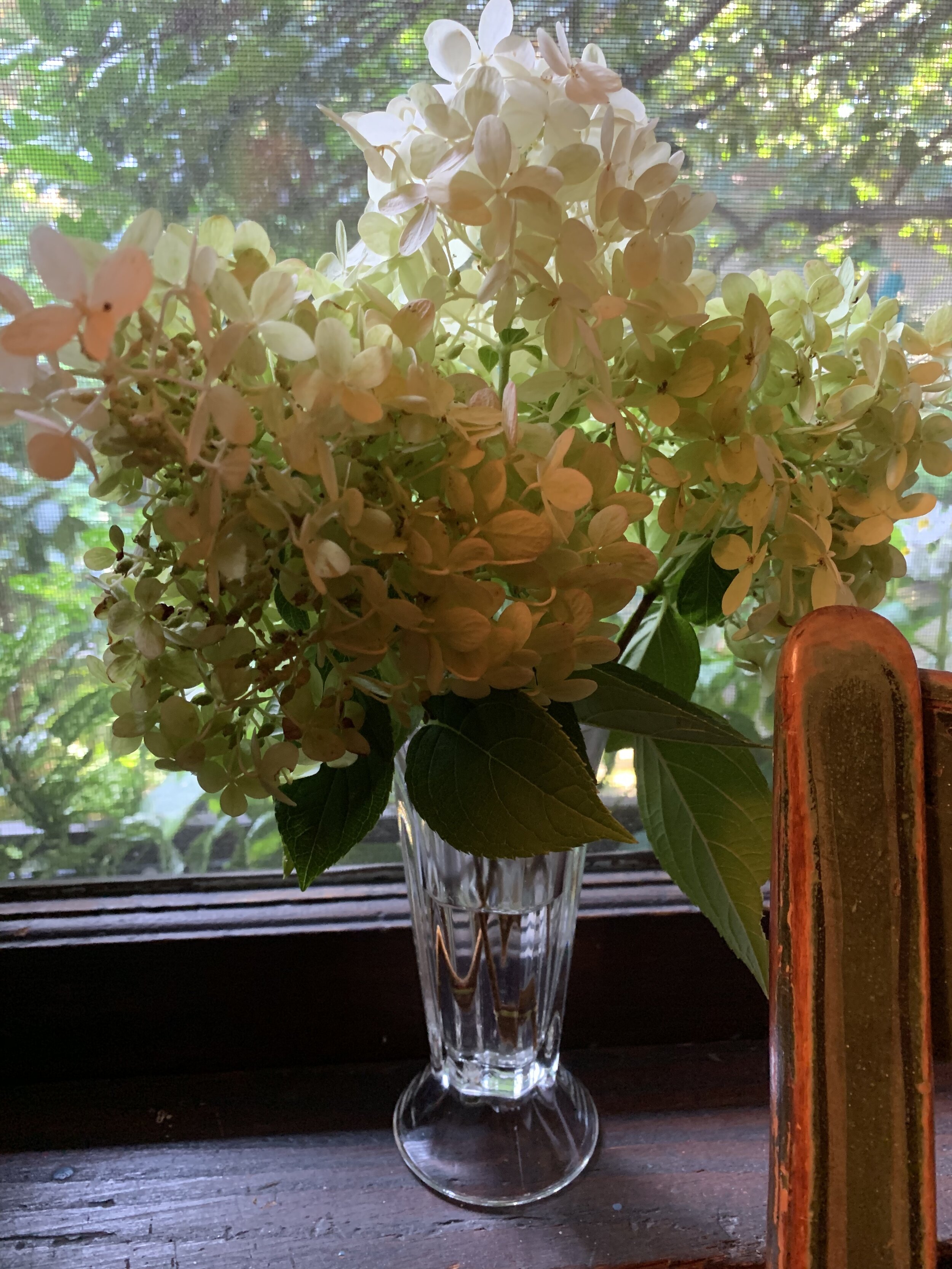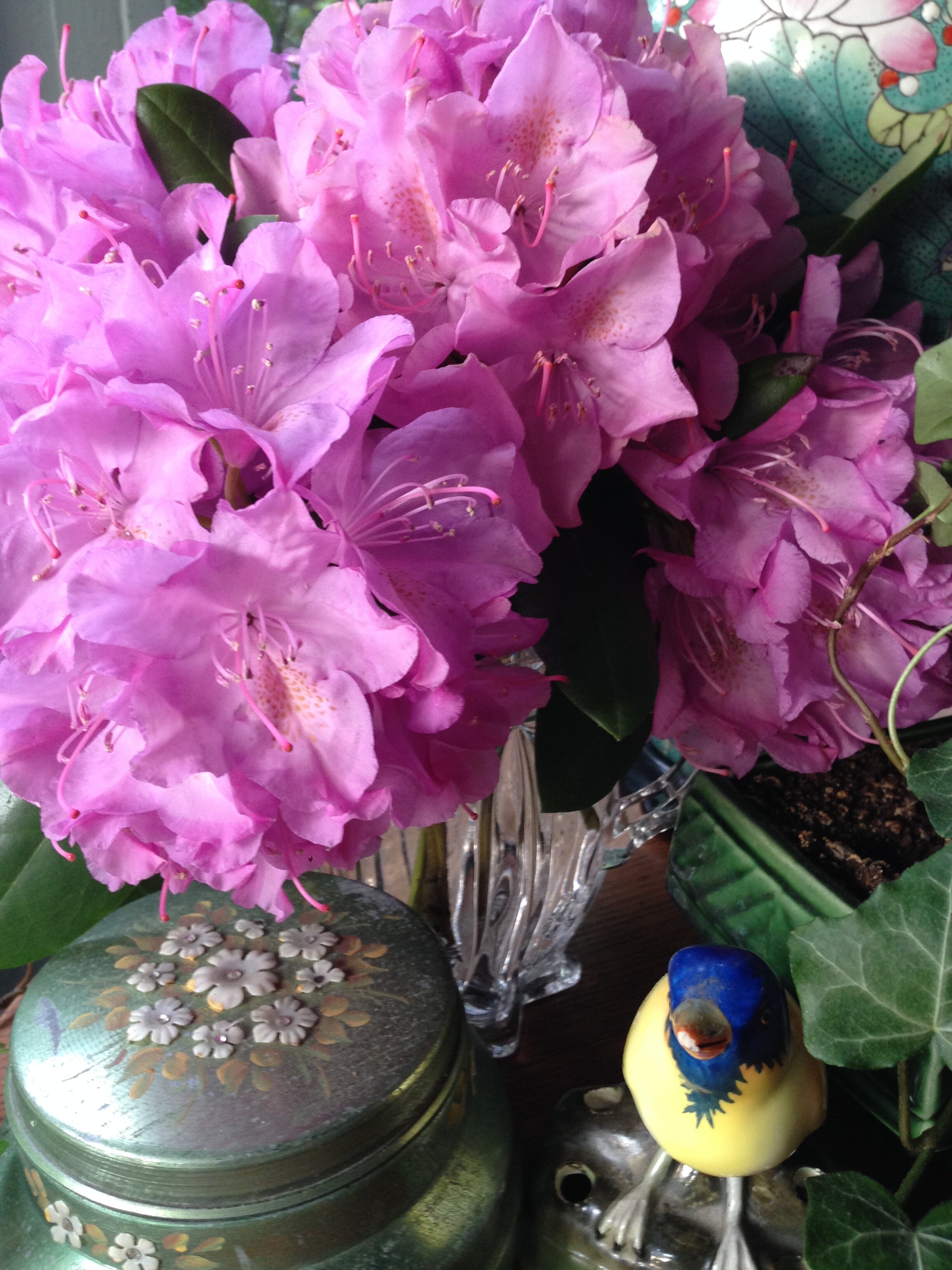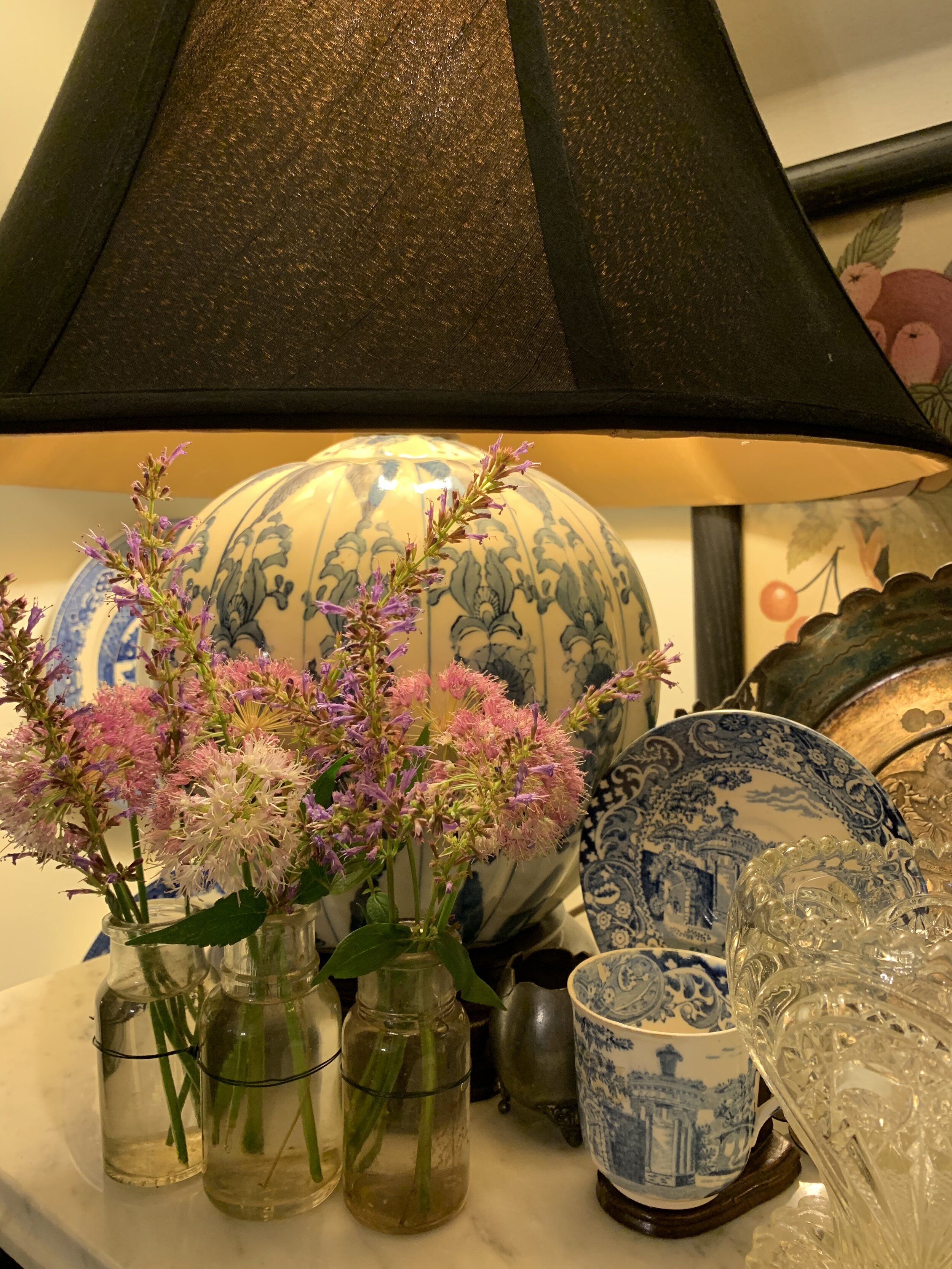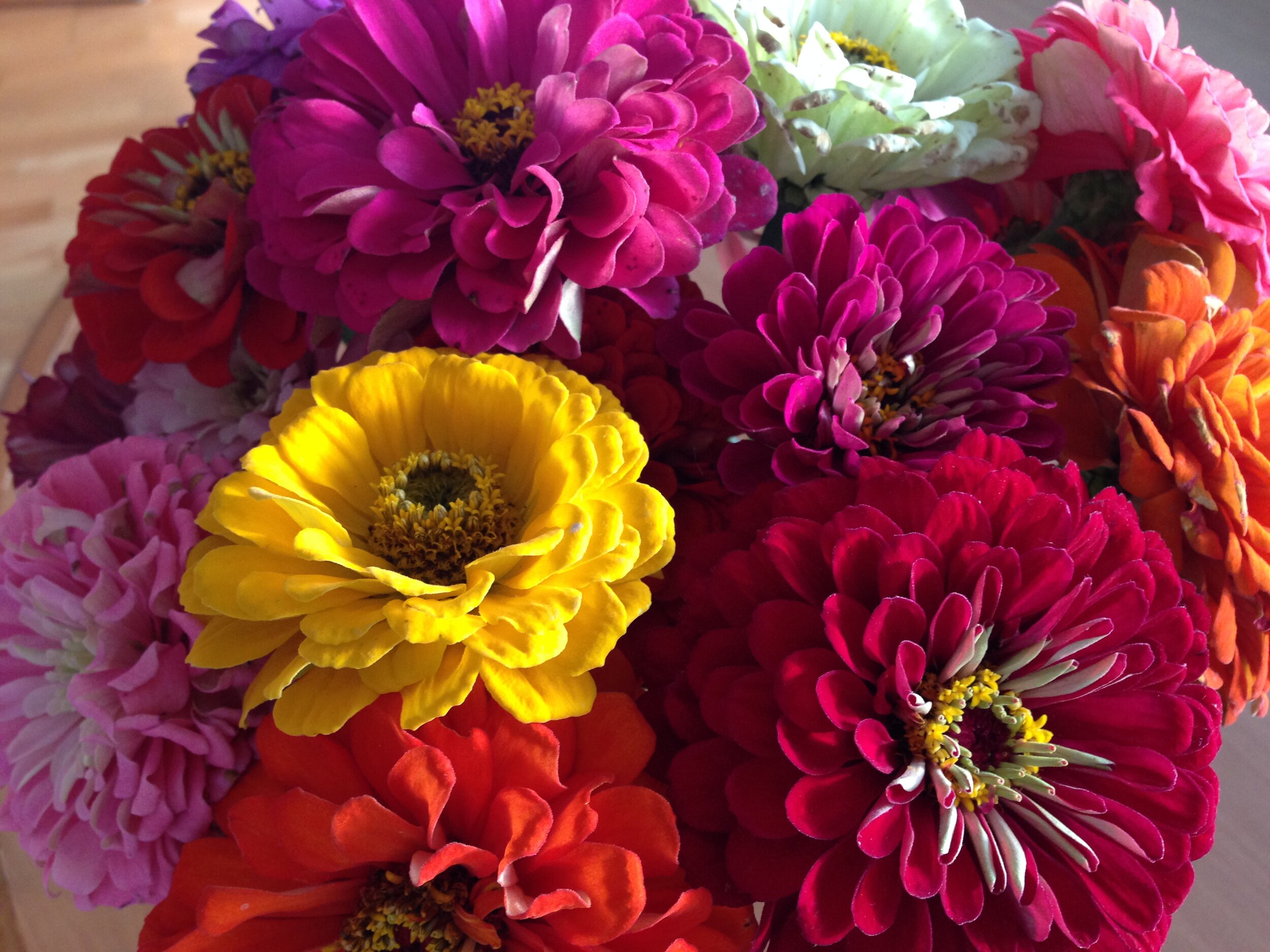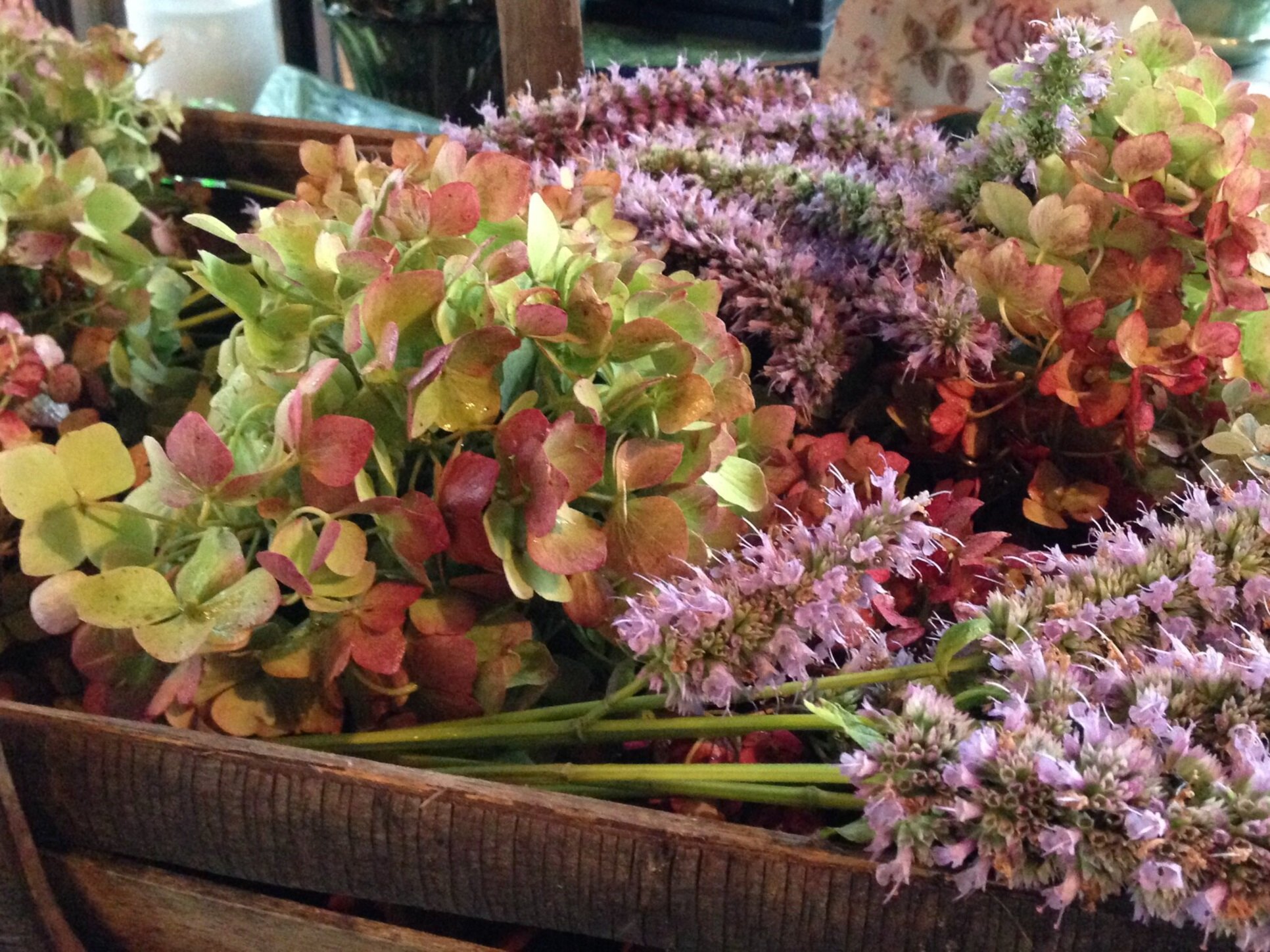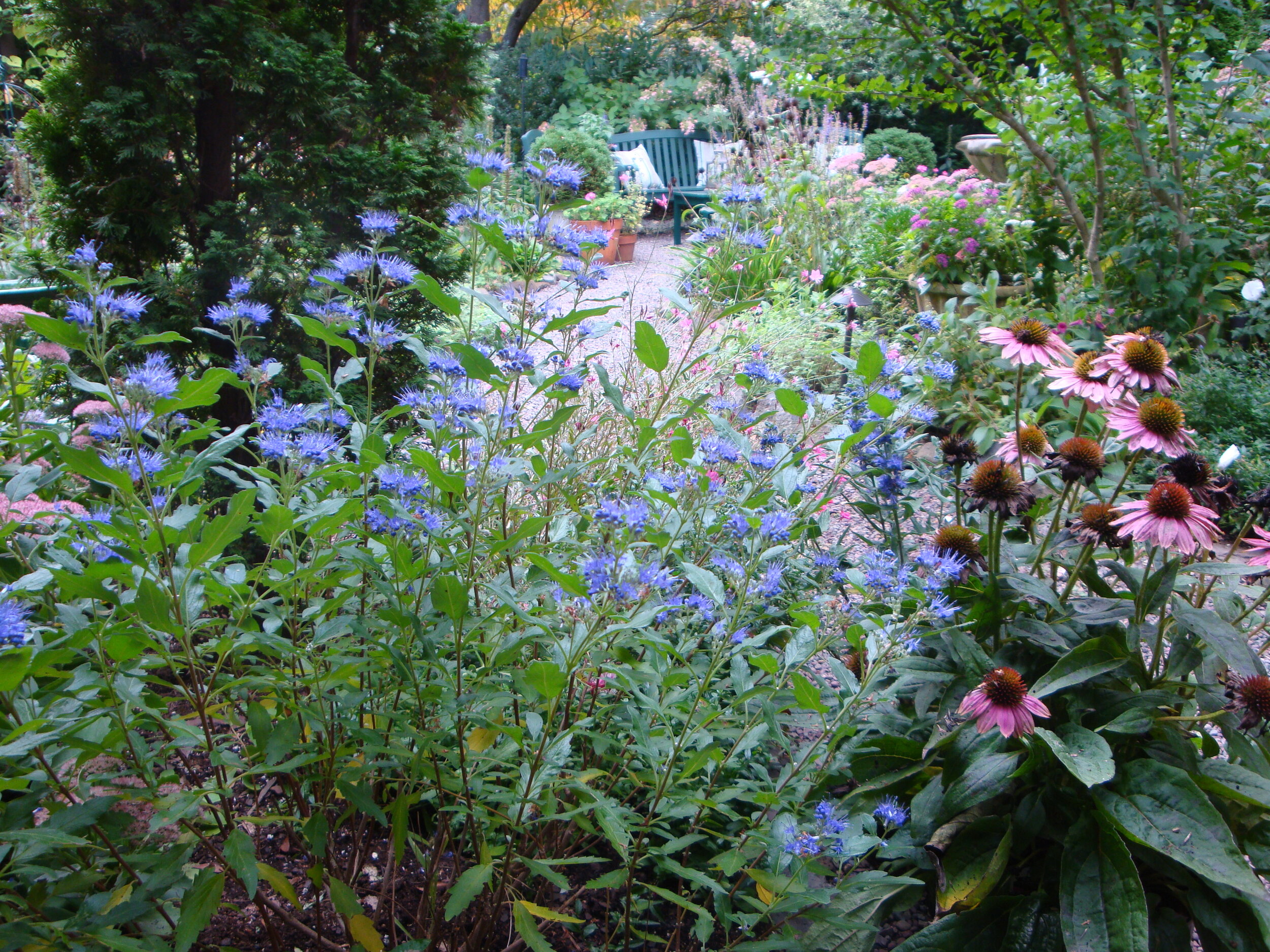The Garden Can Remain Standing...
Now that I have admitted fully to the change of seasons, and realize that the garden has more than fulfilled its summer promise and is becoming rather tired from all of its hard work and sustained effort, I also realize that I suddenly have a lot of chores to do! Admittedly, I have been neglectful with much of my fall gardening work, simply because the garden had been looking so good and continuing on; the warm, sunny days and newly flowering plants just kept telling me that the summer was lingering, that the fall was kind, and that there was no rush to hurry the garden away. But the rustling winds and dipping temperatures are now telling me otherwise, so I had better get busy.
Our garden here at Elm Cottage consists of many different areas - all planted accordingly to specific sun or shade conditions, as well as to how the various areas are generally used. Pathways meander from here to there, but generally circle the house and always return to the starting point. Breaking these areas into specific work categories helps greatly when taking on a large task, such as a fall or spring cleanup. The areas are treated differently too - in regards to how they are prepared, maintained, or tidied - depending upon their location and planting scheme. Many of the areas I leave somewhat - if not completely - untouched; I allow various plants to remain standing until late winter or early spring. But this does not mean that there is not a lot of work to still be done - even in those areas where I do not fully cut back the plants, as there is always a certain amount of cleanup involved.
Carefully choosing what to cut back in the fall garden
Since the garden is a ‘cottage garden’, there is generally quite a lot to ‘clean up’ in the fall, simply due to the nature of the garden. The rambling, exuberant abundance that the garden grows into in late summer is something that needs to be tamed - at least a little. Generally, I tend to let the garden just be and to do its own thing, much more than I clip and prune and tidy. Of course I do all of those things, and regularly, but just not so severely. A cottage garden should be allowed a bit more freedom than most gardens. But there does come a time when it can become unruly and overgrown and generally just out of shape - and that is when intervention is needed - so I do my best to groom and trim in order for the beauty to keep shining through and to keep the garden looking its very best.
The beautiful seed heads of echinacea provide not only winter interest in the garden, but are also a valued food source for birds
The fall presents this issue rather clearly: the garden is overgrown and looking messy and needs some care. Yes, the plants are big and sprawling, even splitting, and spilling across the pathways. The leaves are falling - everywhere! And suddenly the garden just looks out of sorts. A proper fall clean up is in order, for sure. The front garden - the one most visible to passersby - gets my attention first. And while much of that garden is left to stand (some plants actually require it for their own health and winter survival) - the things that I do cut down are mostly in the front garden - and they are mostly plants that have simply become too overgrown and floppy and no longer look good. The plants that can provide some winter interest - the ones with beautful seed heads - or the plants that birds regularly go to for nourishment - those are the plants that I leave standing all winter long, cutting them back perhaps in late February or March.
The back garden, and other side areas that are not readily visible to anyone other than visitors, are mostly left to stand in their entirety. Many plants flop and wither and nearly become invisible all on their own; yellowed leaves shriveling; brown and blackened foliage dropping and fading, disappearing into the ground. Some plants, like echinacea or sedum, remain upright and beautiful, especially when covered with frost or snow. These plants, among many others, also provide valuable and needed food for the birds and other wildlife. Even as I write this, our garden is being visited by many goldfinch, who absolutely adore the coneflowers! I could not possible cut them back without feeling immensely guilty - and so I do not. The wildlife who visit my garden depend on its food supply, and at no time of the year is it more important than during the winter months, which is primarily the reason that I do not cut my plants back; doing so would eliminate the food source that so many creatures have come to depend on here at Elm Cottage.
So little by little the garden cleanup and fall chores begin. Plants are indeed cut back, but most are left to stand. The transition of the garden from summer to fall has been an odd one this year. The summer - and the summer flowers - have lingered. The temperatures have been somewhat seasonable, but have leaned much more towards warmer, than cold. And we have had little rain. Until just this week, the garden was looking mostly like a ‘September’ garden. Now we have had our first frost, and things do seem to be changing on a daily basis. Many plants in the garden are well passed, or even completely gone. Some little blooms keep trying! We have beautiful autumn coloring on many of our trees - the amelanchier ‘Autumn Brilliance’ in particular - while other varieties are still completely green. Yes, it’s been an odd year, indeed! But it is now a year - gardening wise, at least - that is over - whether we wish it to be, or not. Alas, let the garden cleanup begin!
Until next time…

